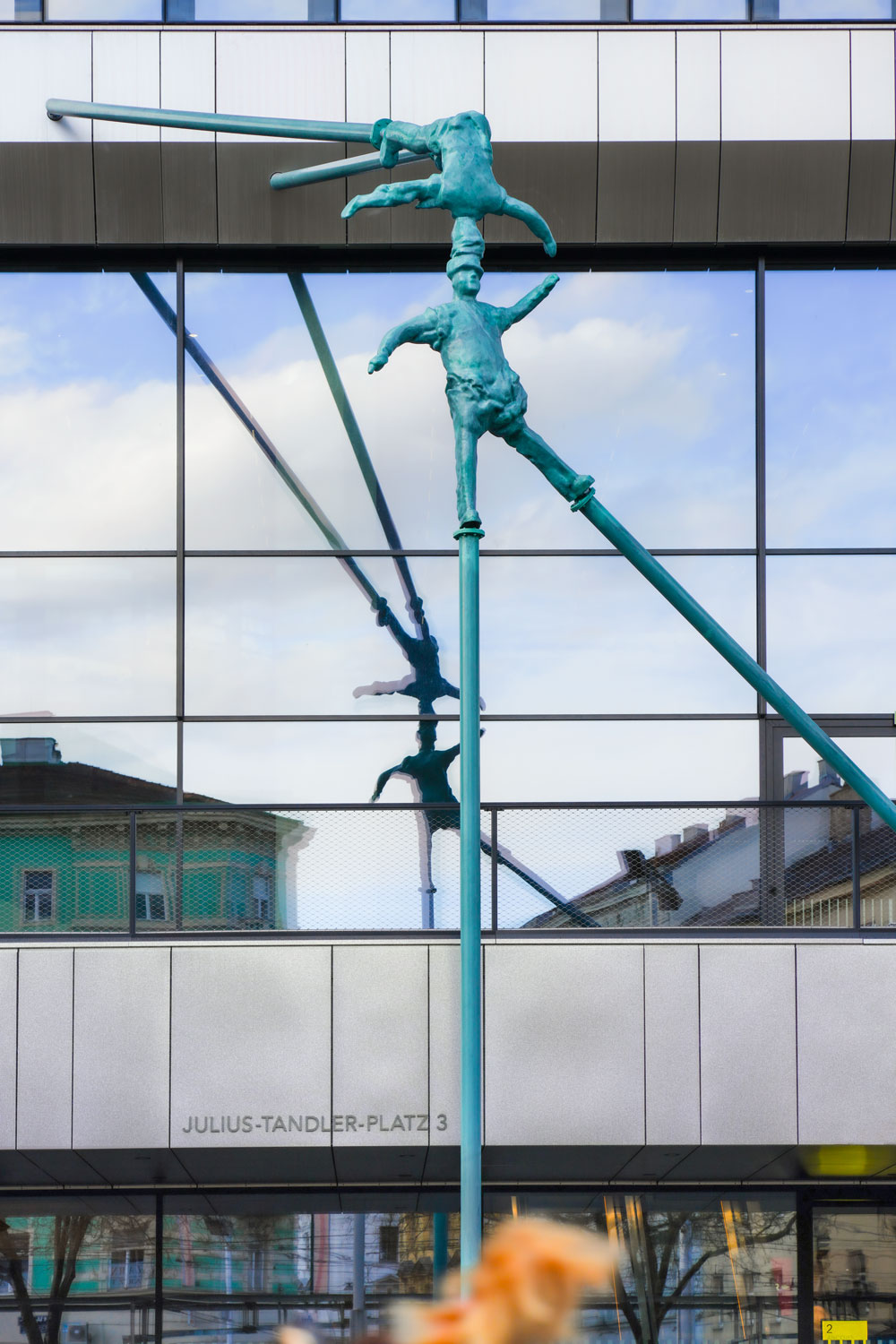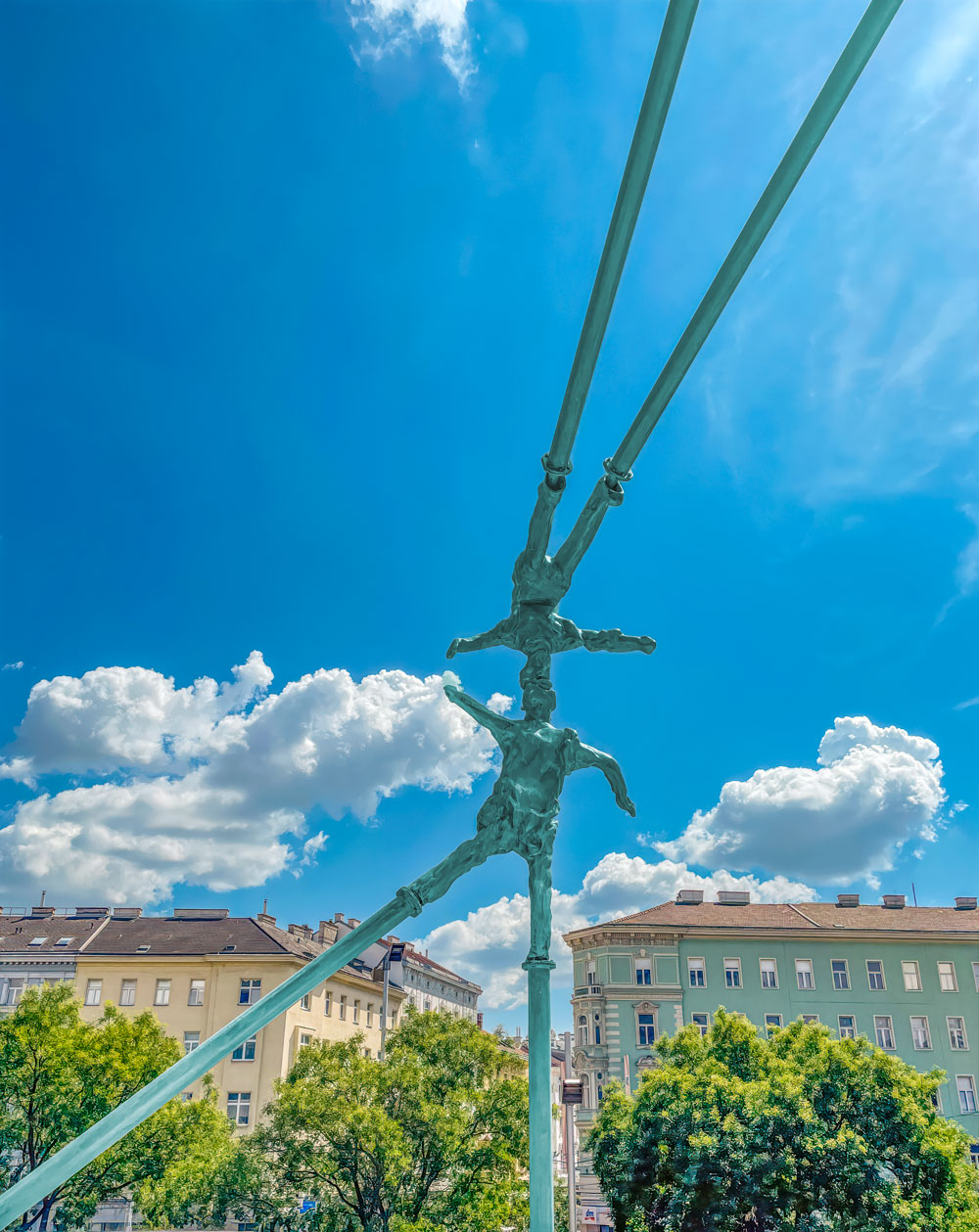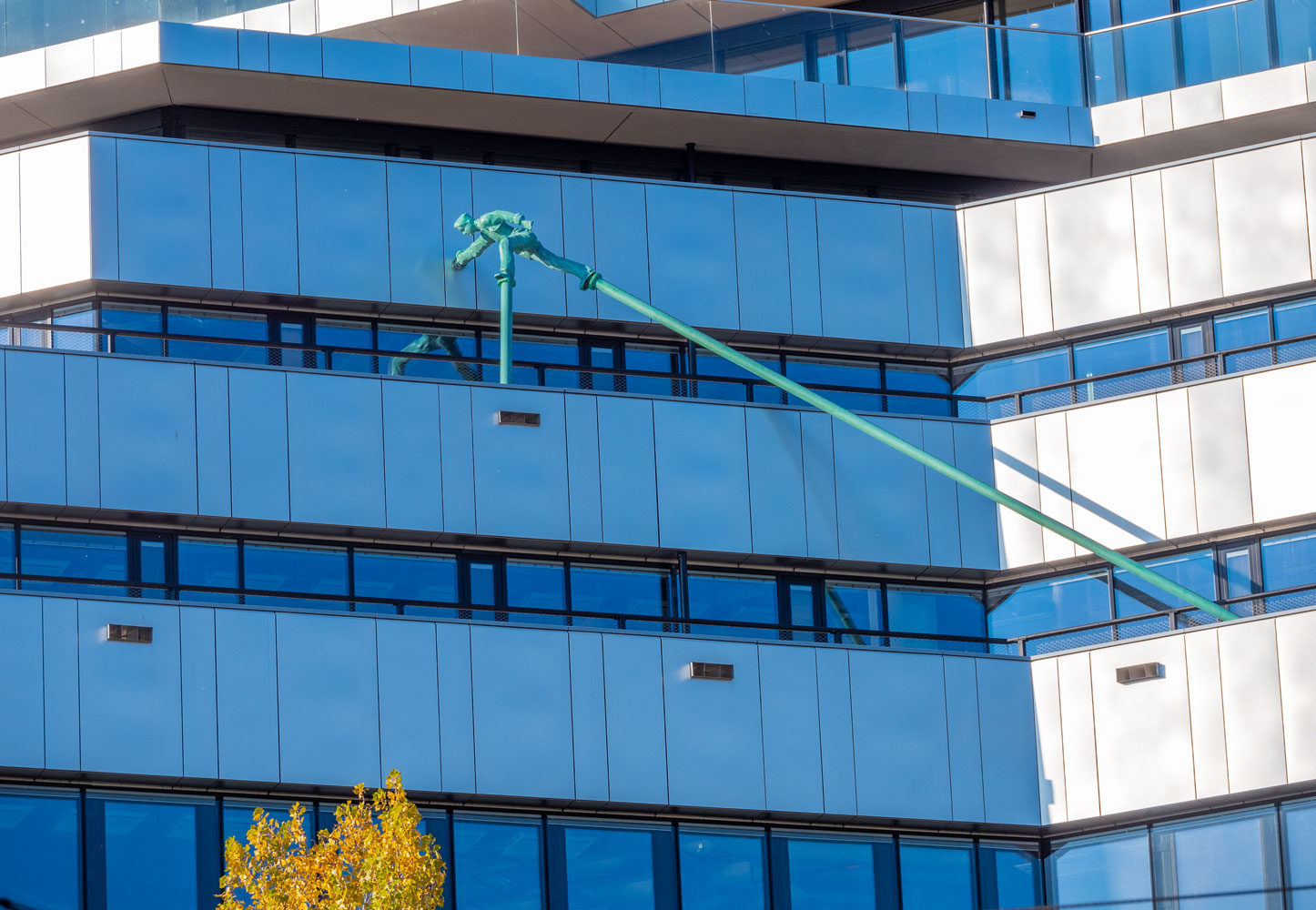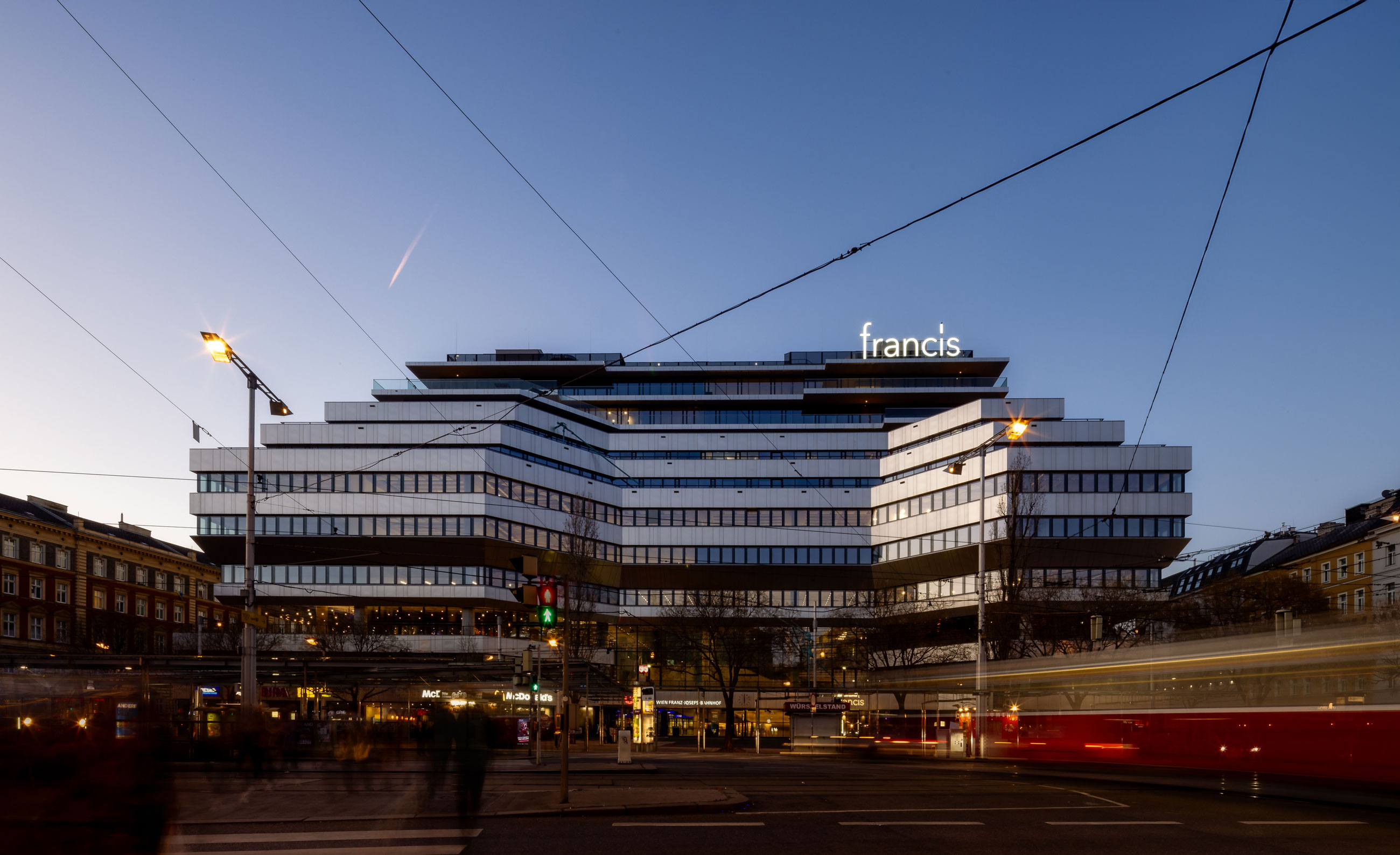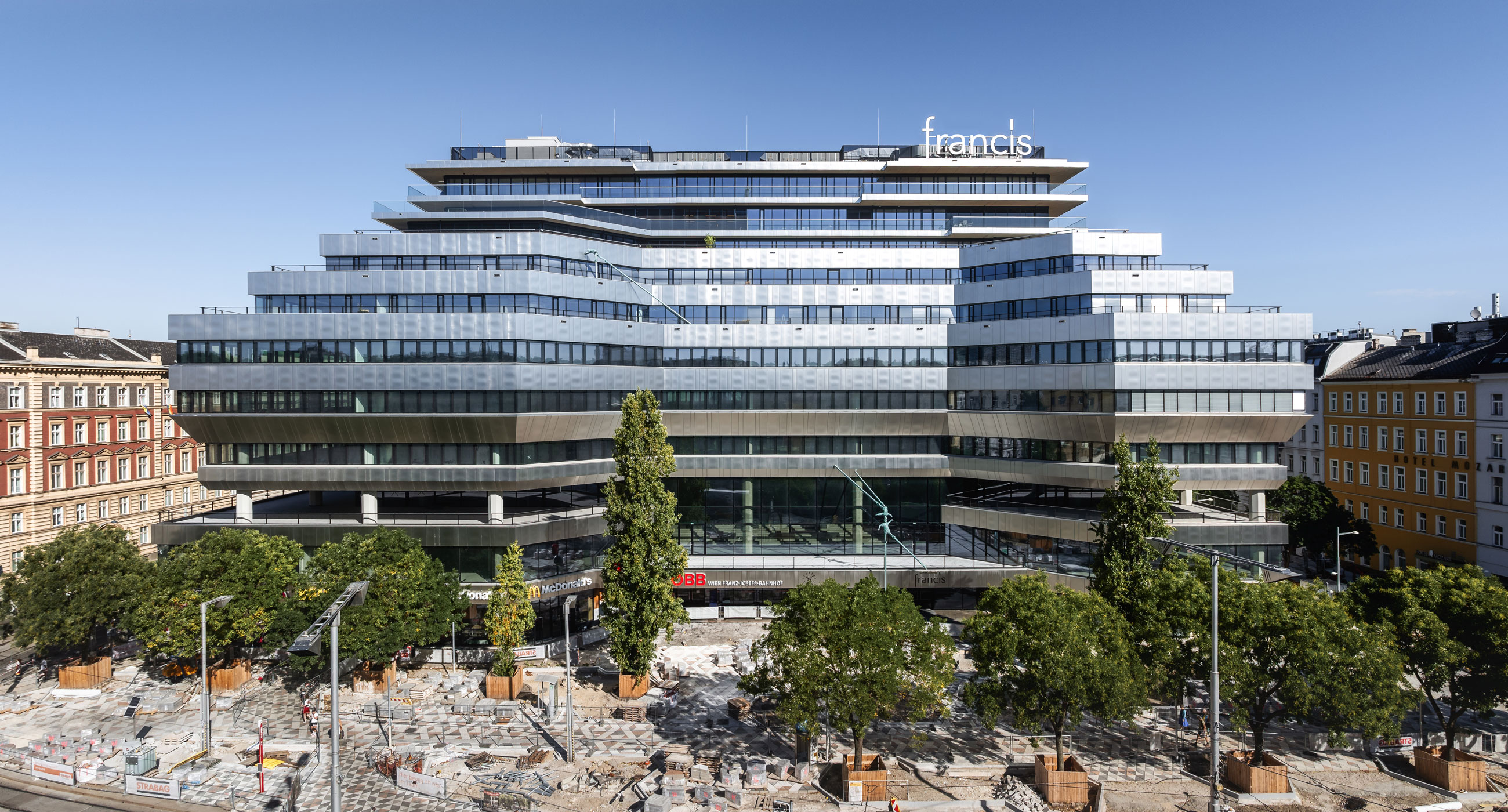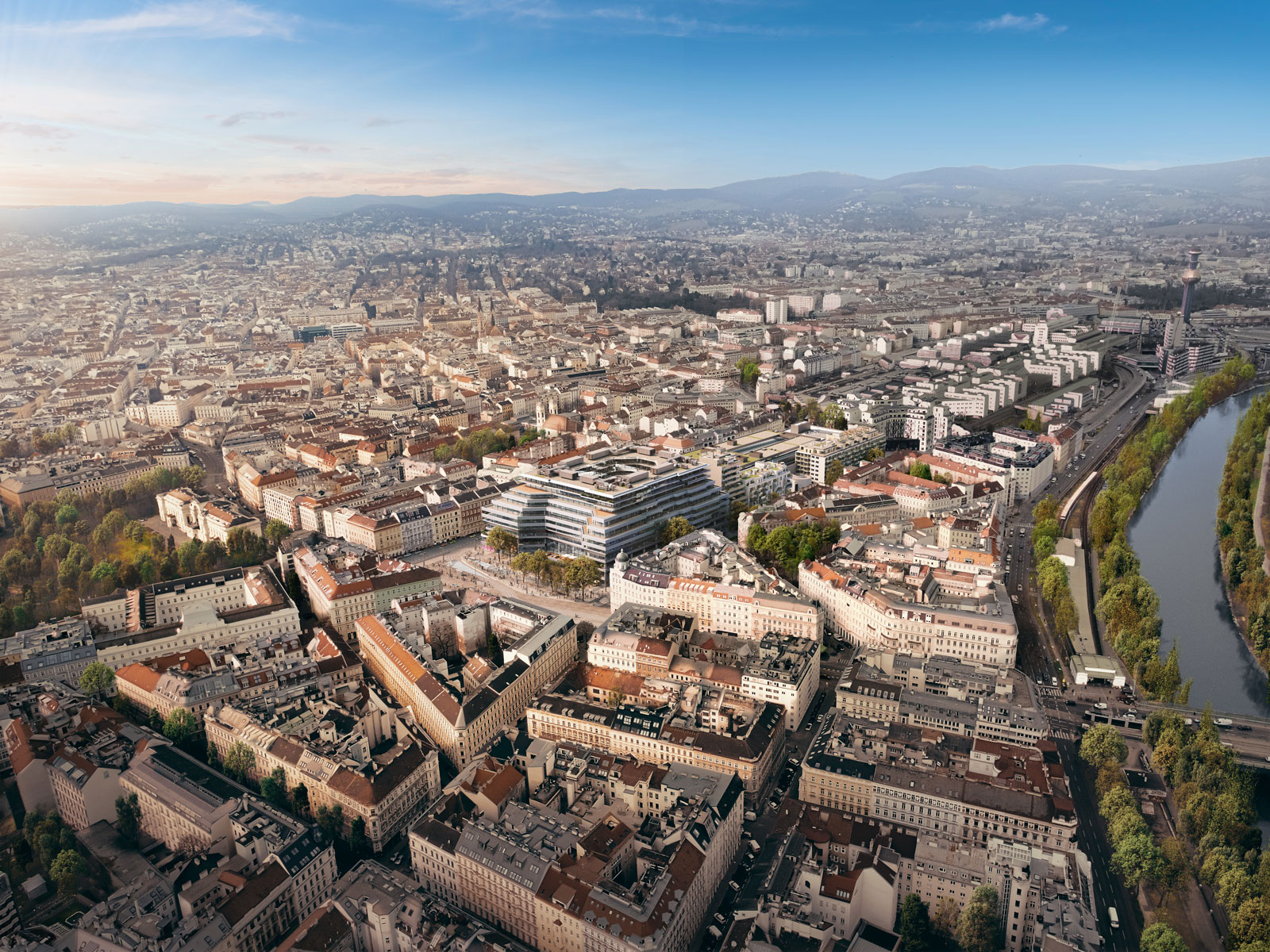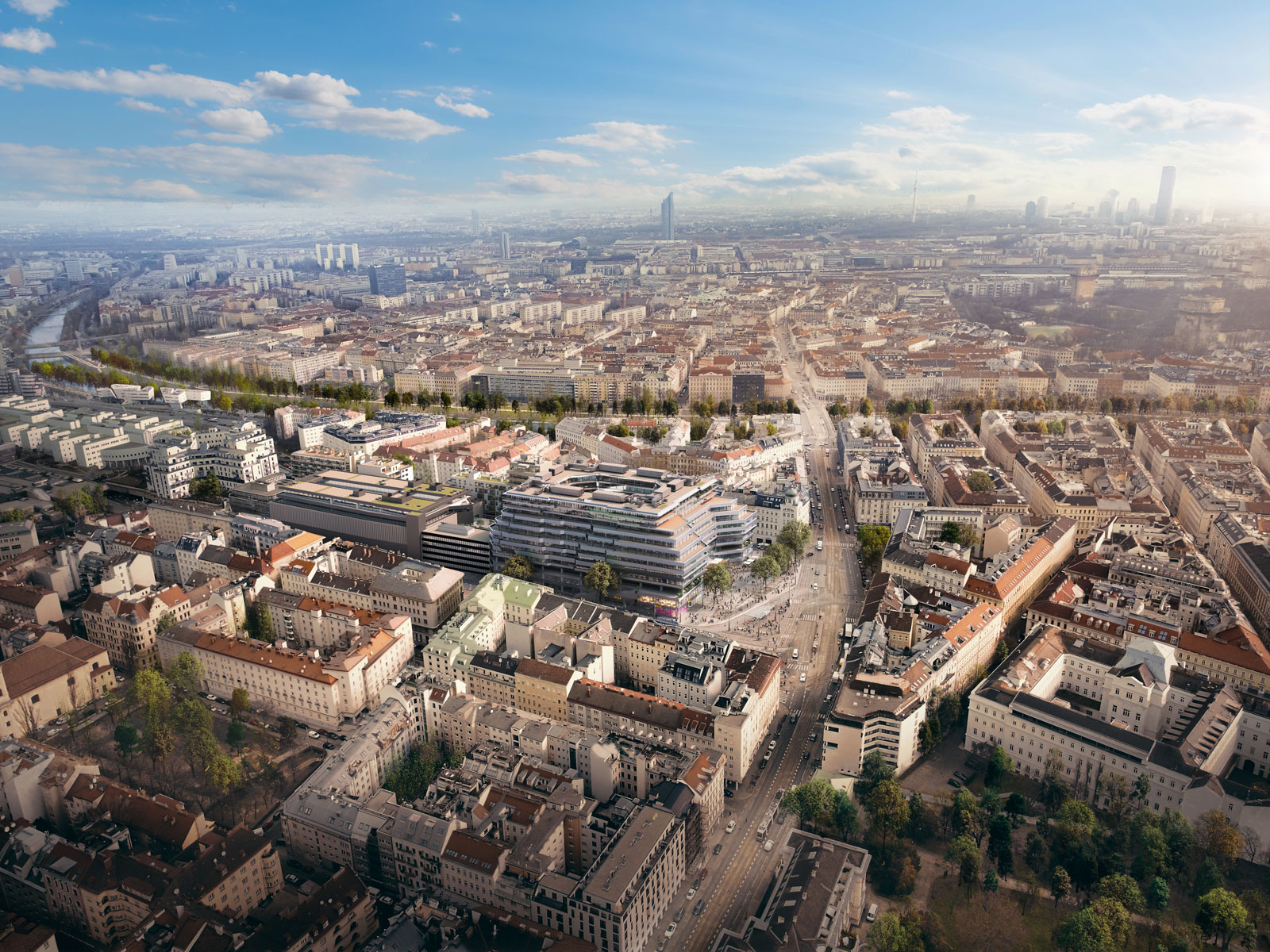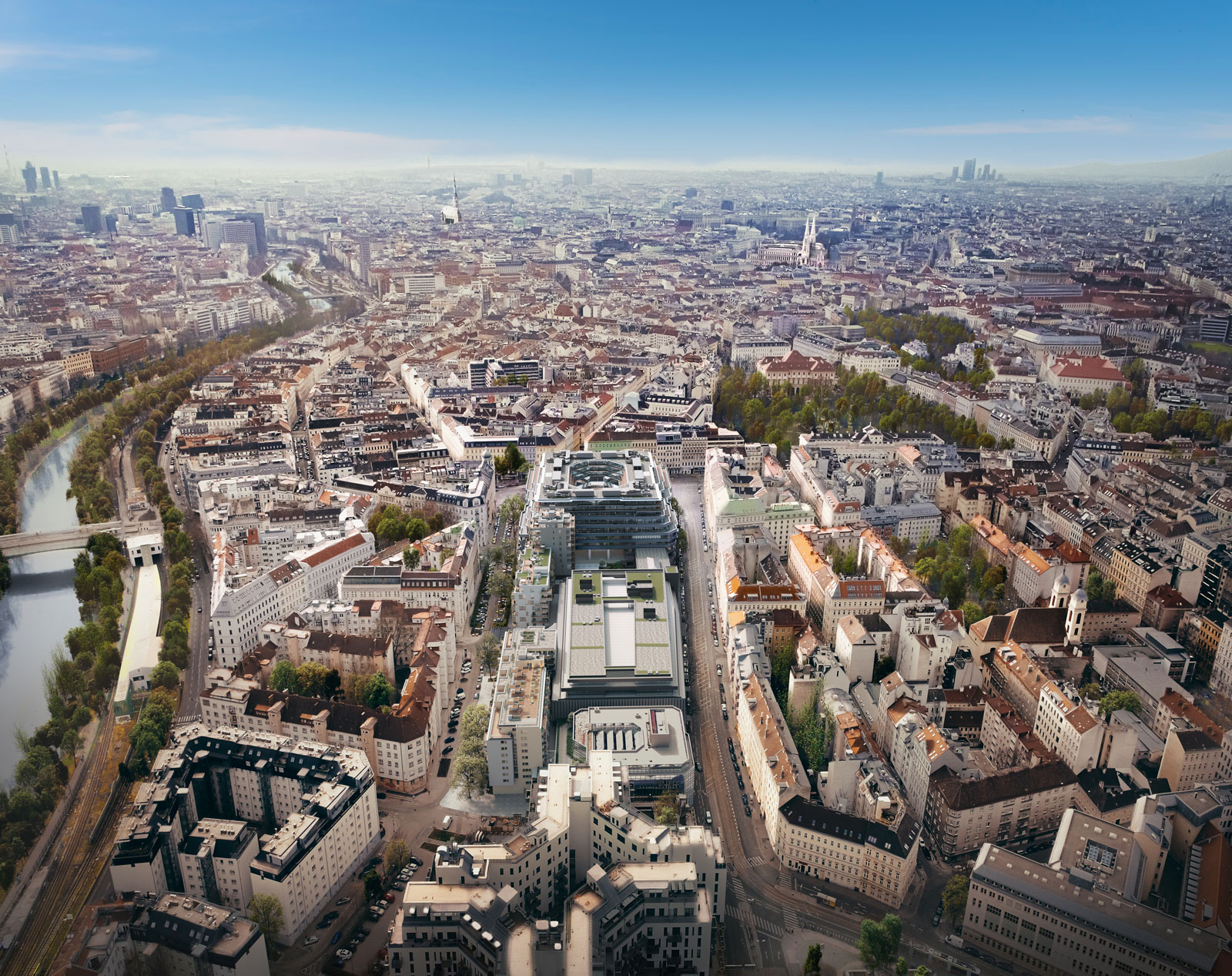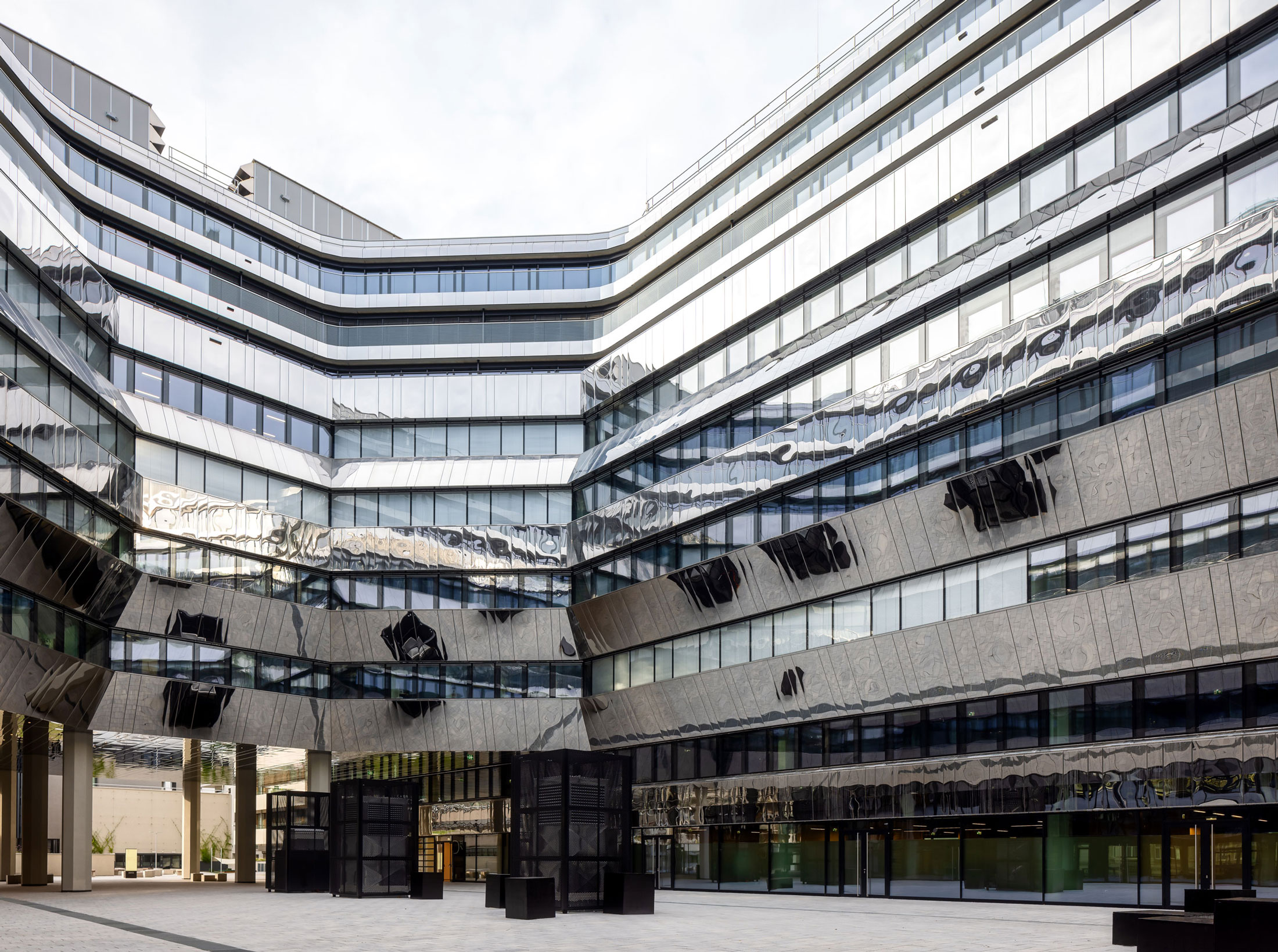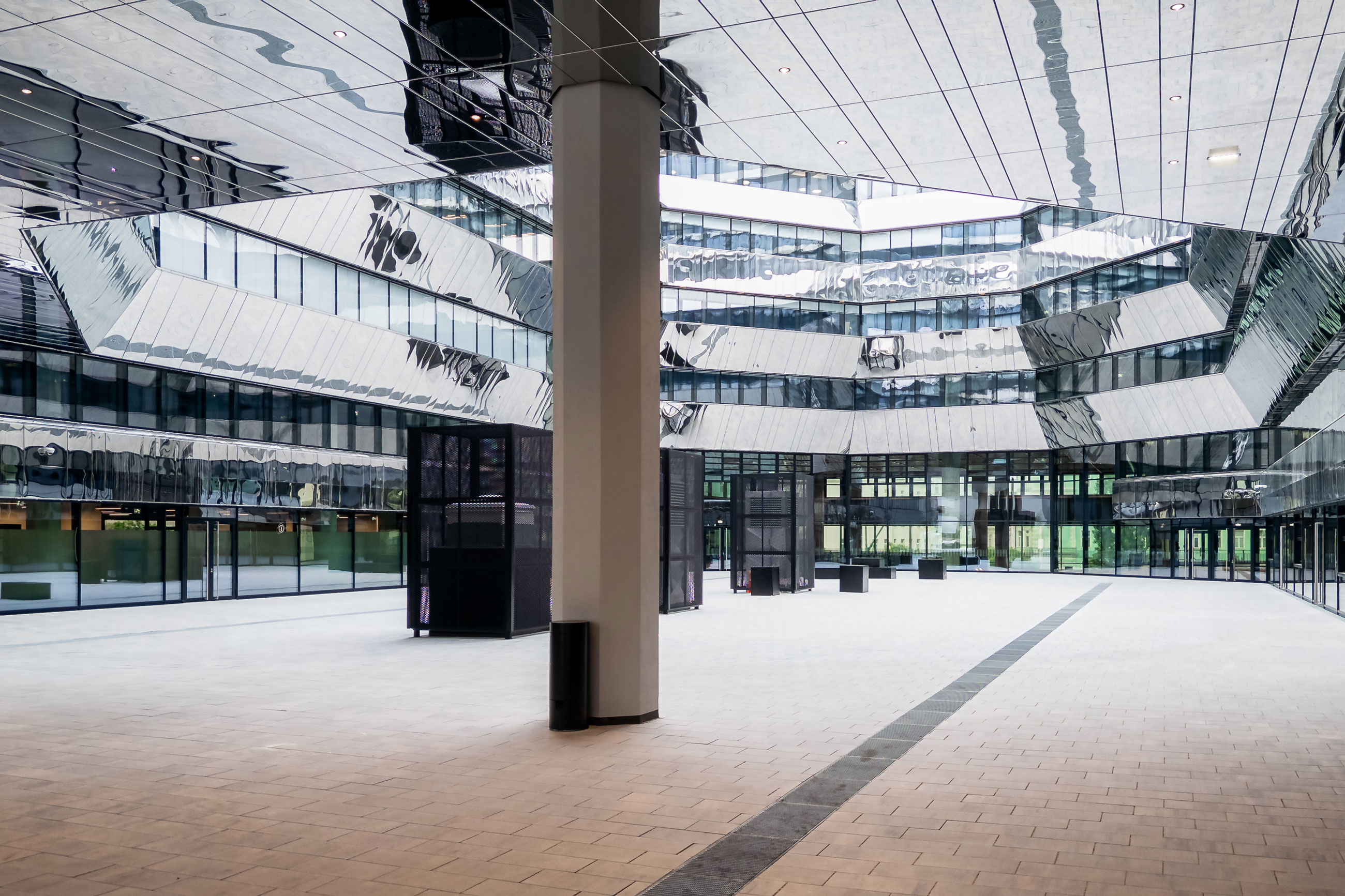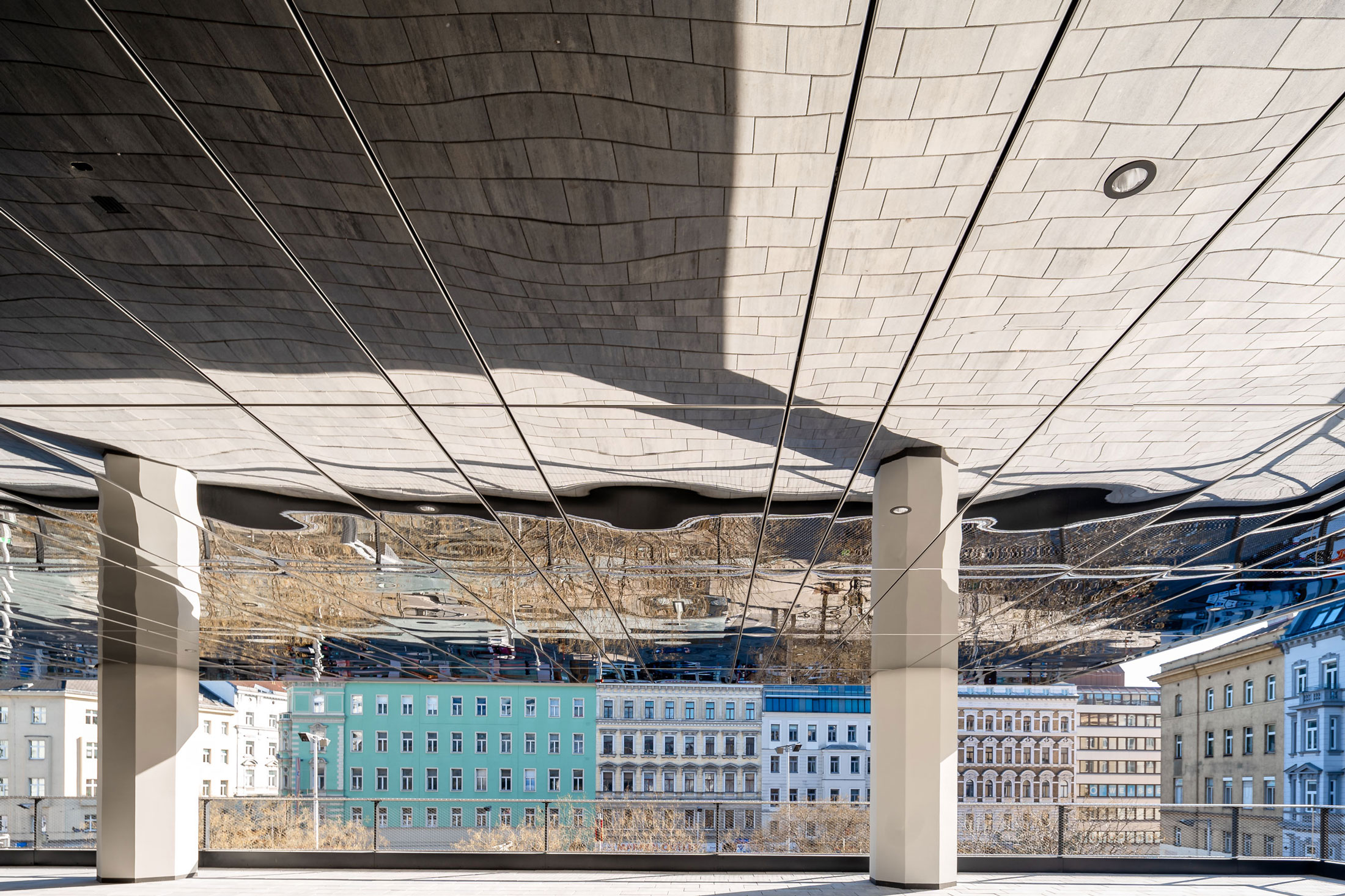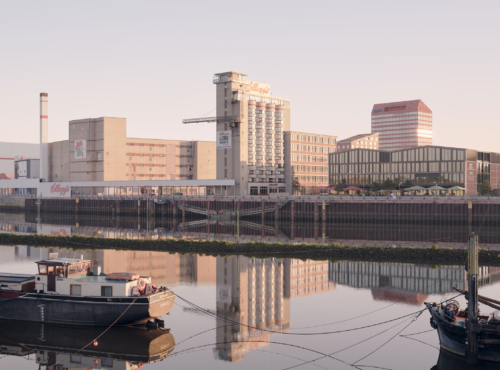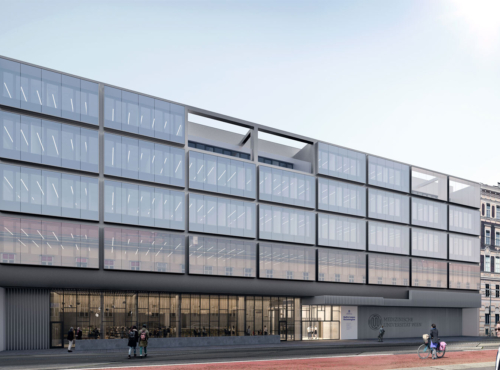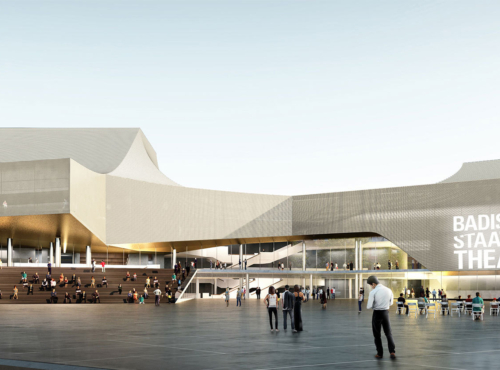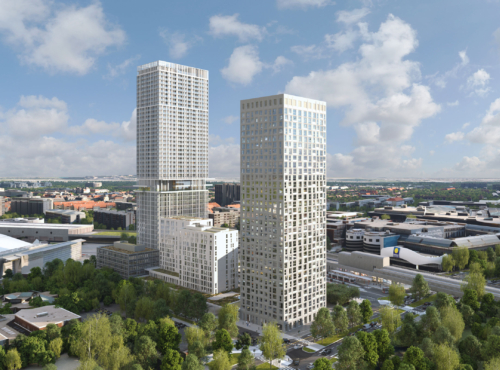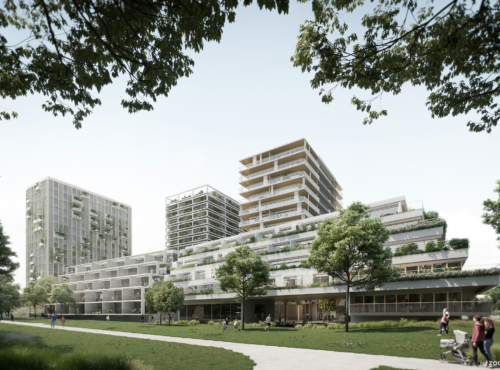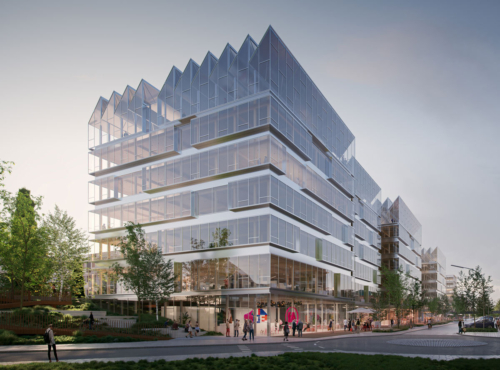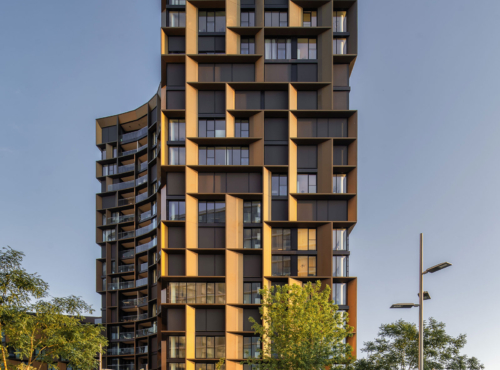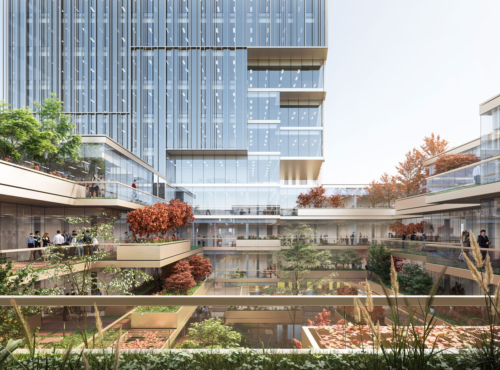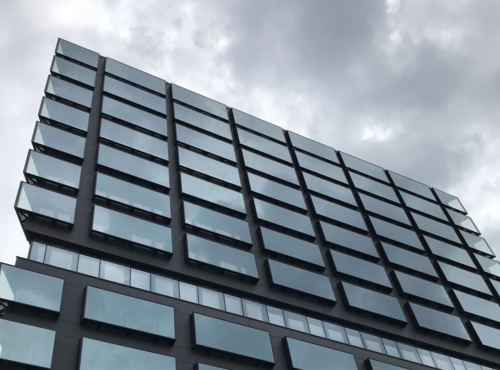Austria
- Mixed Use
- Office
- Retail
- Built
New life at Franz-Josefs-Bahnhof: Delugan Meissl Associated Architects (DMAA) and Josef Weichenberger Architects (JWA) transformed the terminus station and the office building above it under the name Francis from an impassable barrier in the centre of the district into a transparently permeable centrepiece of the new Althan Quartier.
The decisive factor in the decision to convert, i.e. to demolish, redevelop and add storeys, was the significant impact on the ecological balance of the project. This meant that considerable amounts of CO2 could be saved.
From a split neighbourhood to casual transparency
With Francis and the Althan Quartier around Franz-Josefs-Bahnhof (Franz-Josef-Station), a new urban and also connecting quarter is being established in Vienna‘s ninth district.
New thoroughfares form a bridge between the Spittelau and Lichtental districts, which were long separated by the railway tracks of the terminus station and the previously inaccessible former Bank Austria building. The 2.4-hectare site of the Althan Quartier now serves as a central connecting element in the district. This means that one of the main objectives of the conversion has been achieved: a better quality of stay and life for the neighbourhood.
Conversion or the beauty of chances
The project illustrates the potential for urban development and the environment that lies in the transformation of existing buildings. Particularly in times of land and resource scarcity, the preservation and further development of valuable existing structures is worthwhile.
As a large proportion of the so-called grey emissions are bound up in the steel and concrete supporting structure, conversion in the case of Francis means enormous ecological benefits: instead of 27,595 tonnes of CO2 for demolition and new construction, the value for conversion is 8,970 tonnes of CO2 - a saving of 67 percent. According to the results of a study by sustainability expert, architect and civil engineer Werner Sobek, 122,480 tonnes of concrete and 10,944 tonnes of steel were saved, which is groundbreaking regarding the shortage of raw materials and climate change.
In addition, the quality of life of local residents was maintained during the renovation - an estimated 10,000 lorry journeys were avoided by not demolishing and rebuilding the existing. Necessary dismantling work, removal and recycling were carried out inside the building and in the underground loading yard, minimising dust, noise and construction site traffic.
German Version
Adress
Julius Tandler Platz 3
1090 Vienna, Austria
Start of planning
2016
Start of construction
Spring 2022
Completion
End of 2024
Floor area
ca. 60.000 m²
Gross floor area
ca. 70.000 m²
(above ground)
ca. 11.000 m²
(below ground)
Gross volume
ca. 280.000 m³
(above ground)
63.000 m³
(below ground
Height
45 m
Number of levels
11
Number of basements
2
Project manager
Sebastian Brunke
Project team
Michael Lohmann, Sebastian Michalski, Prima Mathawabhan, Julia Oblitcova, Marinke Böhm-Kneidinger, Dorota Wojciga
Visualization
Outline Pictures / WOOW Studio
(bird eye view)
Photographer
Christian Pichlkastner
Gebhard Sengmüller
Art in construction
Steinbrener/Dempf & Huber
IN collaboration with
Josef Weichenberger Architects
as ARGE AQ-Arch
Delugan Meissl Associated Architects (DMAA) und Josef Weichenberger Architects (JWA)
CONSULTANTS
Structural engineering
Spirk + Partner
Lighting design
Bartenbach
Building physics
Pilz und Partner
Facade
Dr Pfeiler GmbH
HVACR/ Electrics
ICE Project Group
Fire safety
Brandrat
Surveyor
Vermessung Meixner
Traffic planner
Traffix
Project management
IC
Client
Eristalis Holding GmbH
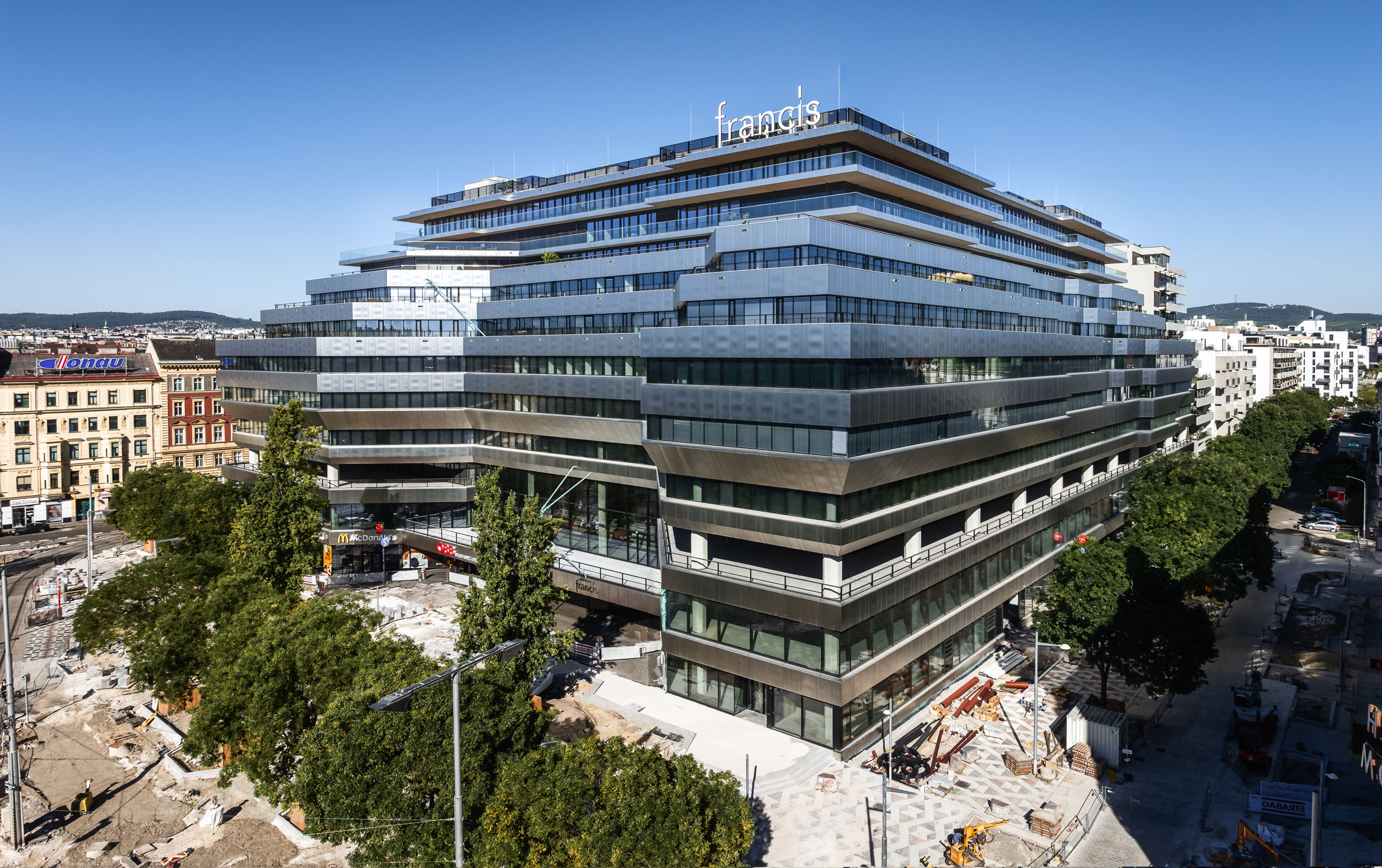
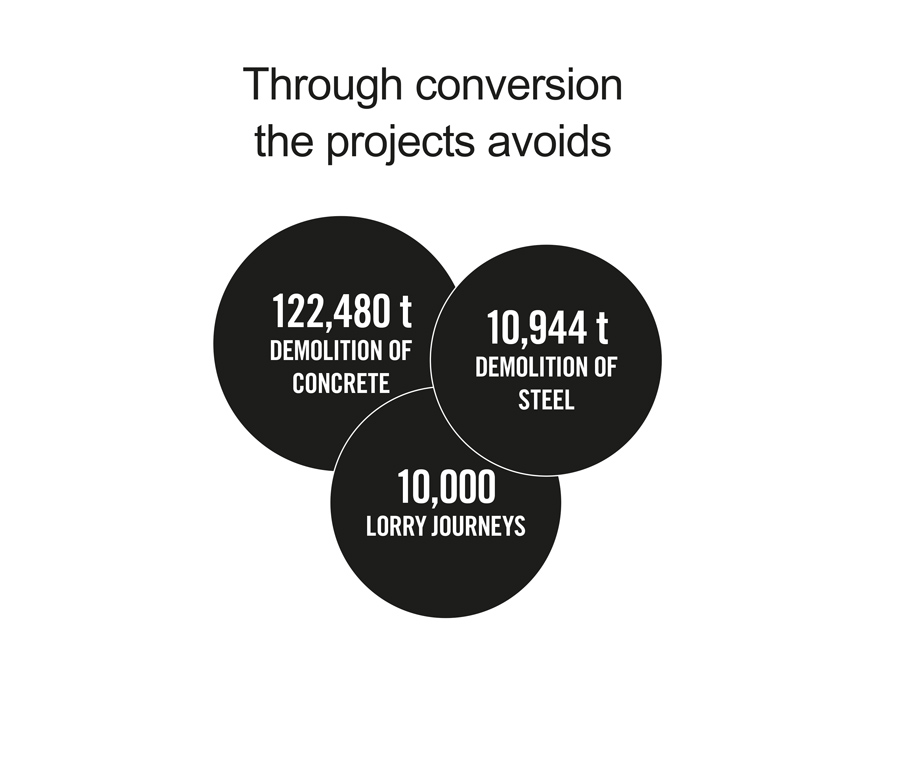
Source
© Eristalis Holding GmbH
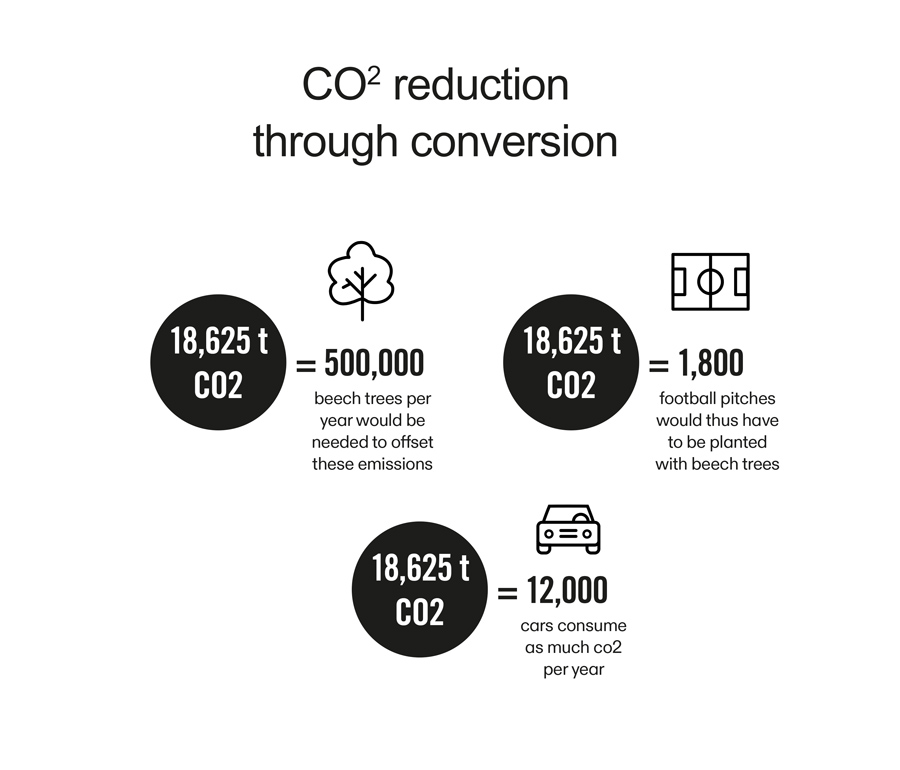
Source
© Eristalis Holding GmbH
8,970t CO² instead
of 27,595t CO²
The decision to convert the Althan Quartier in Vienna‘s 9th district instead of building it new will have a major impact on the CO² footprint of the project: all in all, the reduction amounts to 18,625 t CO², which corresponds to 67 %.
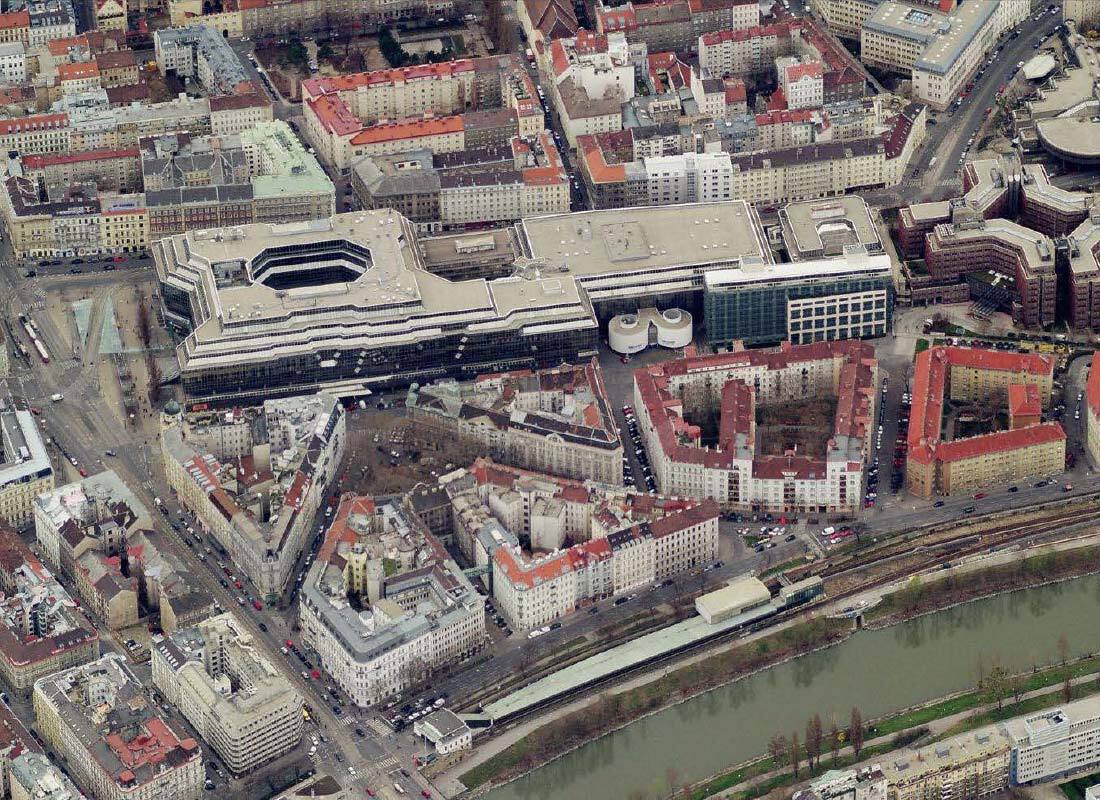
Althan Quartier
Existing building before conversion
Architect Karl Schwanzer

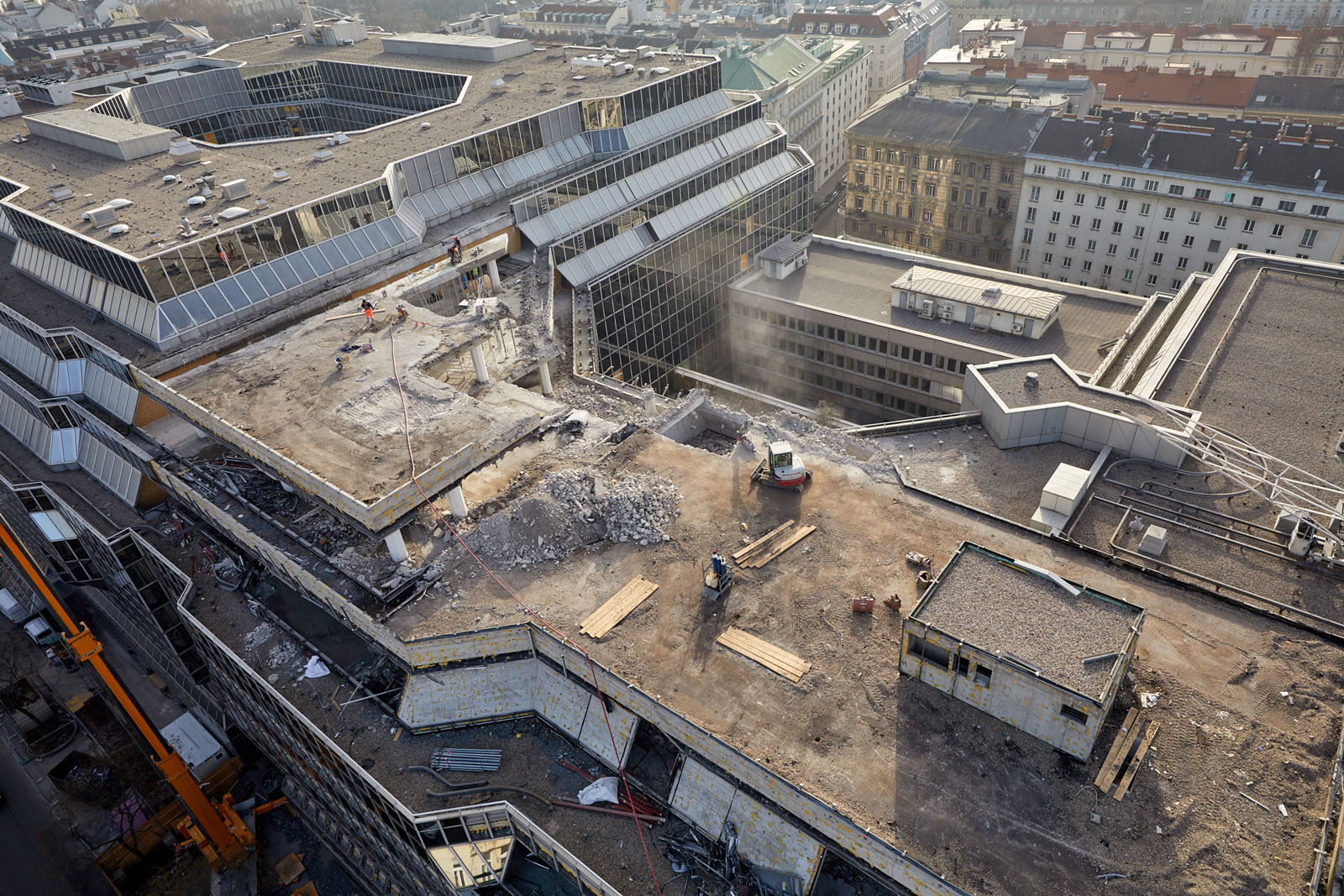
construction site 02/2021
© Eristalis Holding GmbH
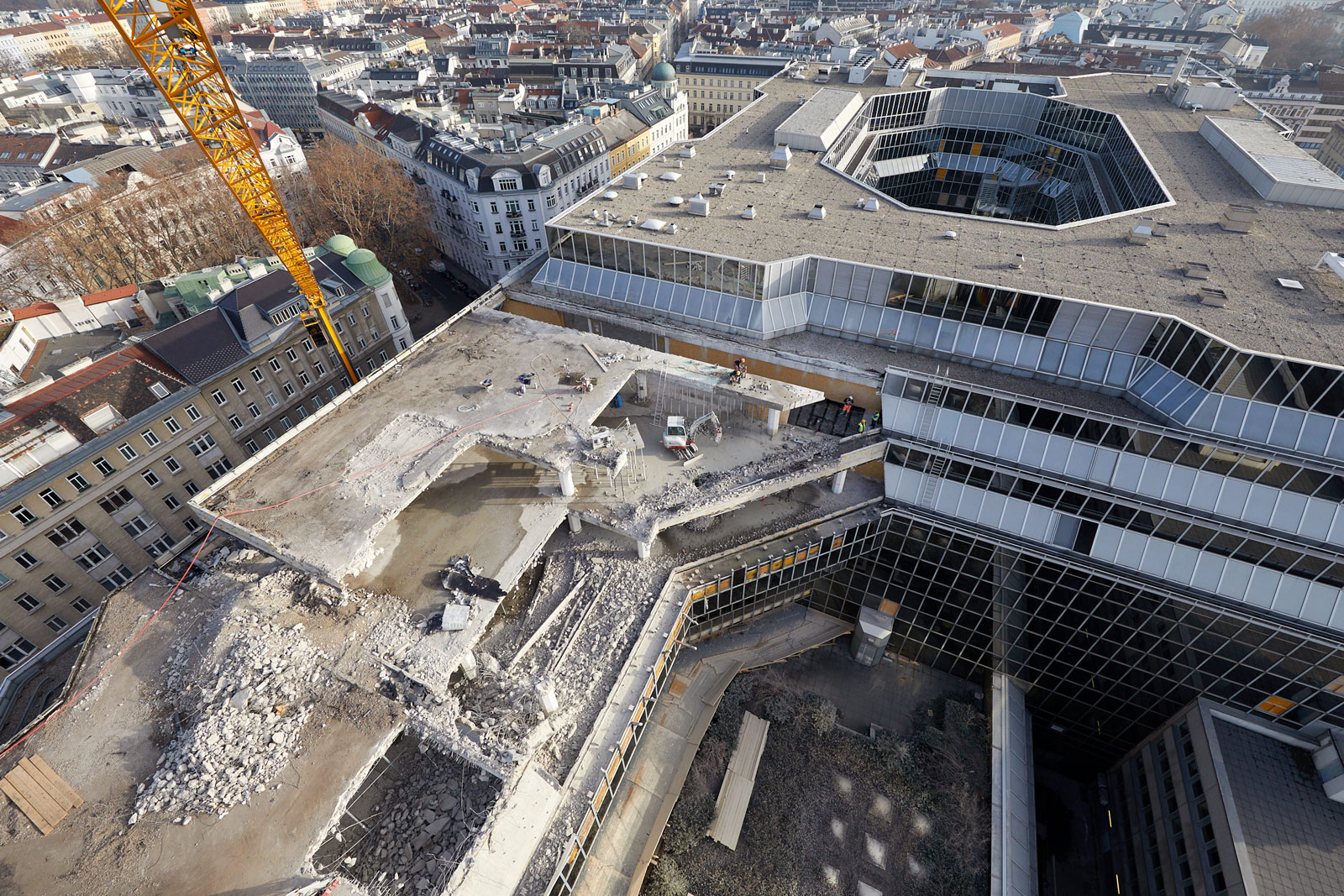
construction site 02/2021
© Eristalis Holding GmbH
Study and analysis of the existing building
The new design was preceded by an extensive reading and understanding of the existing building from the 1970s. Using historical plans and documents, DMAA and JWA analysed and internalised the initial ideas of the original architect Karl Schwanzer in order to make a fundamental decision between demolition and conversion. With the help of BIM (Building Information Modelling), a digital twin of the existing building was created, which enabled comprehensive studies of the concrete cubature and the consequences of possible adaptations. The potential of the existing building with its economically optimised reinforced concrete structure, which was exceptional for the 1970s, was thoroughly examined
in terms of statics, noise and fire protection as well as suitability in terms of building physics.
Characteristics of the existing building in its function as the headquarters of Bank Austria were the mirrored façade and a striking, expansive but almost unused staircase. The mirrored façade emphasised the hermetic nature of the building, while the monumental gesture of the external staircase dominated the area of Julius-Tandler-Platz. The remodelling allowed these outdated stylistic elements to be removed.
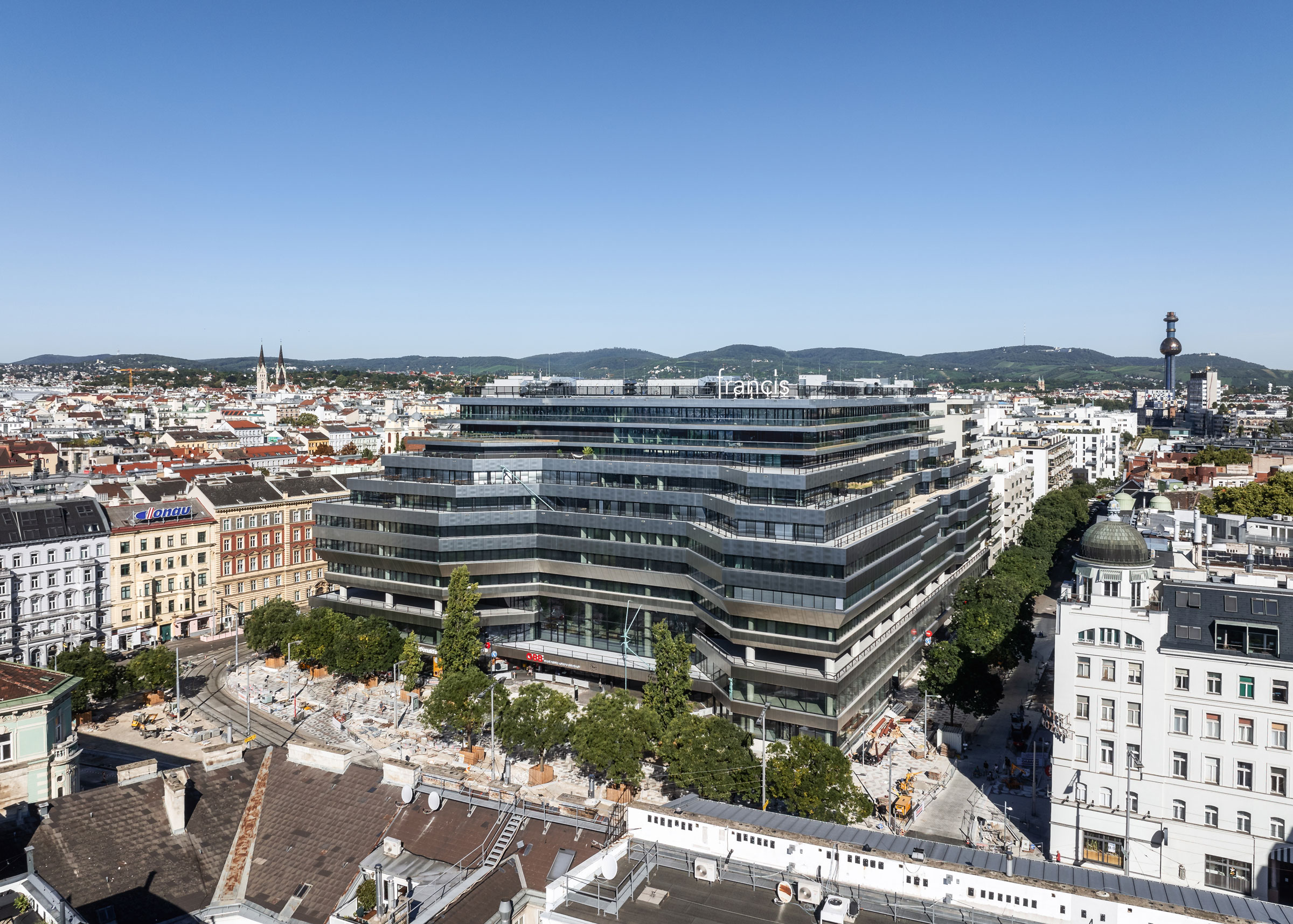
Urban Situation
Development of the new
One of the main focuses of the planning process was to create a new opening to the neighbourhood: new urban places to linger, semi-public spaces, barrier-free access and restaurants with open spaces were to be created. The dimensions and substance of the office building were retained, but new open spaces were created, making Julius-Tandler-Platz much more attractive with a new look and increased accessibility.
Situated nine metres above street level and above the tracks of the railway tunnel, the new plaza level in the inner courtyard links the valuable open spaces of Spittelauer Platz, Lichtentaler Platz and Julius-Tandler-Platz.
Decisive premises of the project development were the pedestrian permeability, the opening to Julius-Tandler-Platz, the broadest possible mix of uses, the redensification of an urban core zone and the harmonious integration into the urban space.
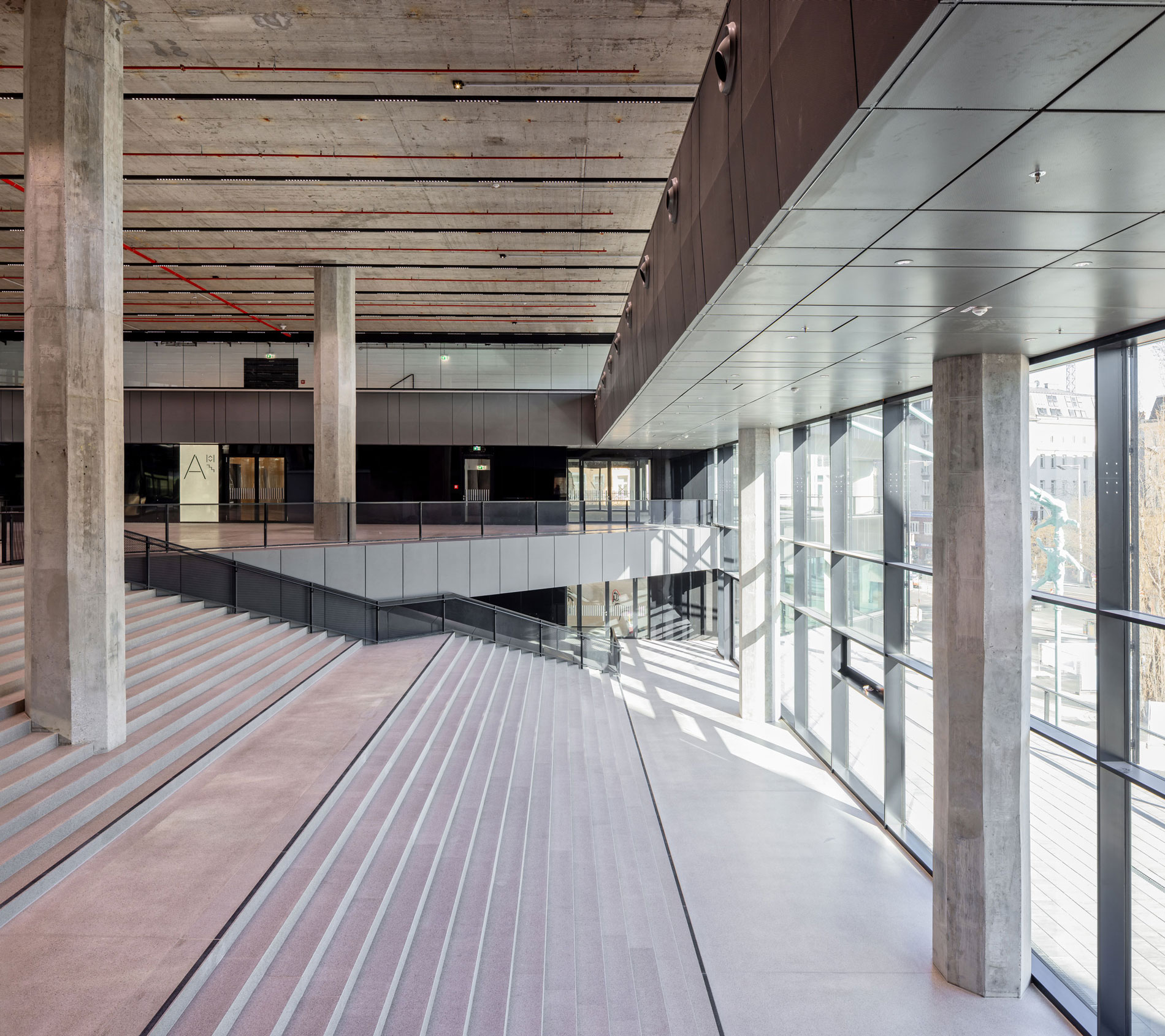
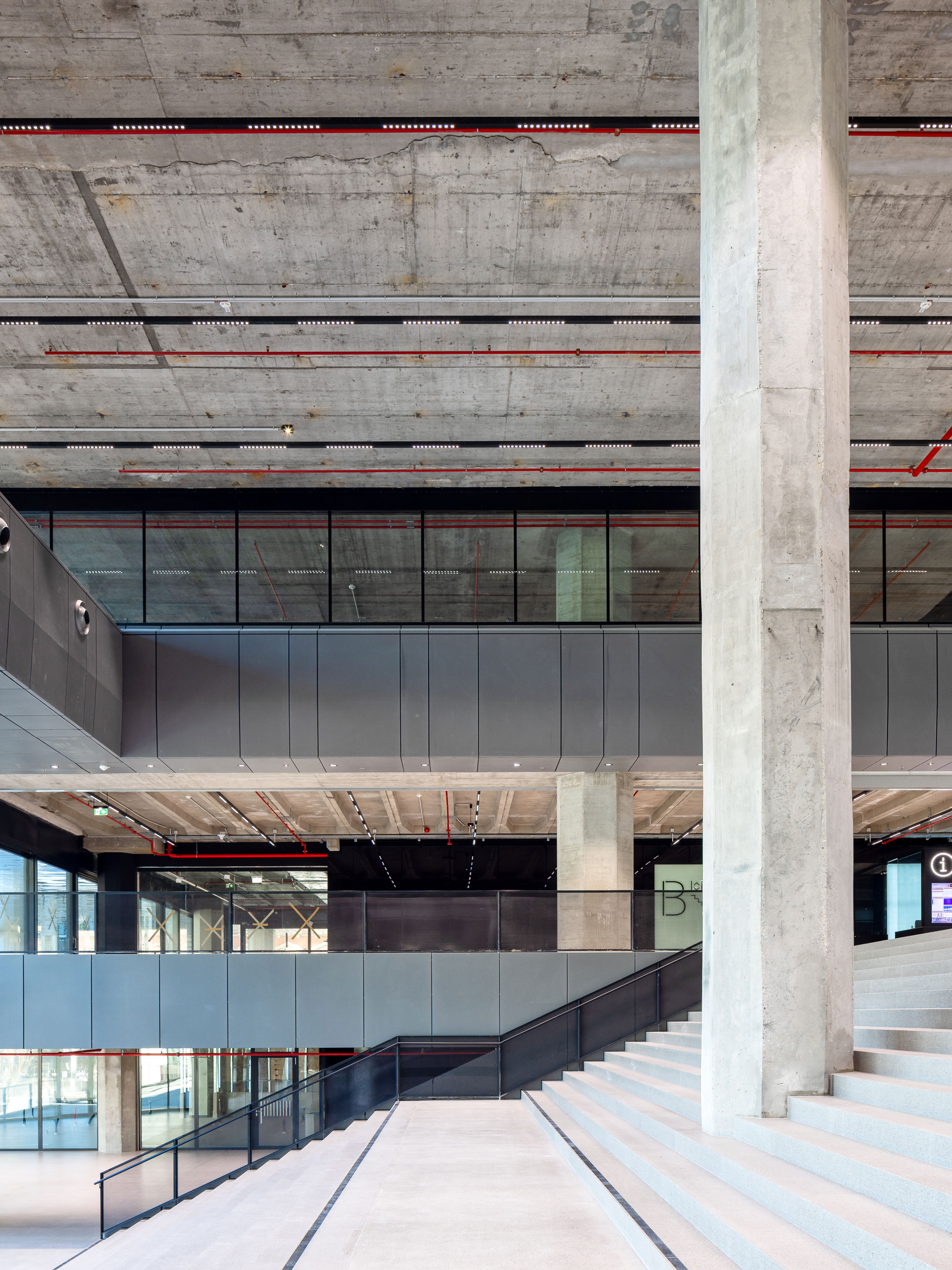
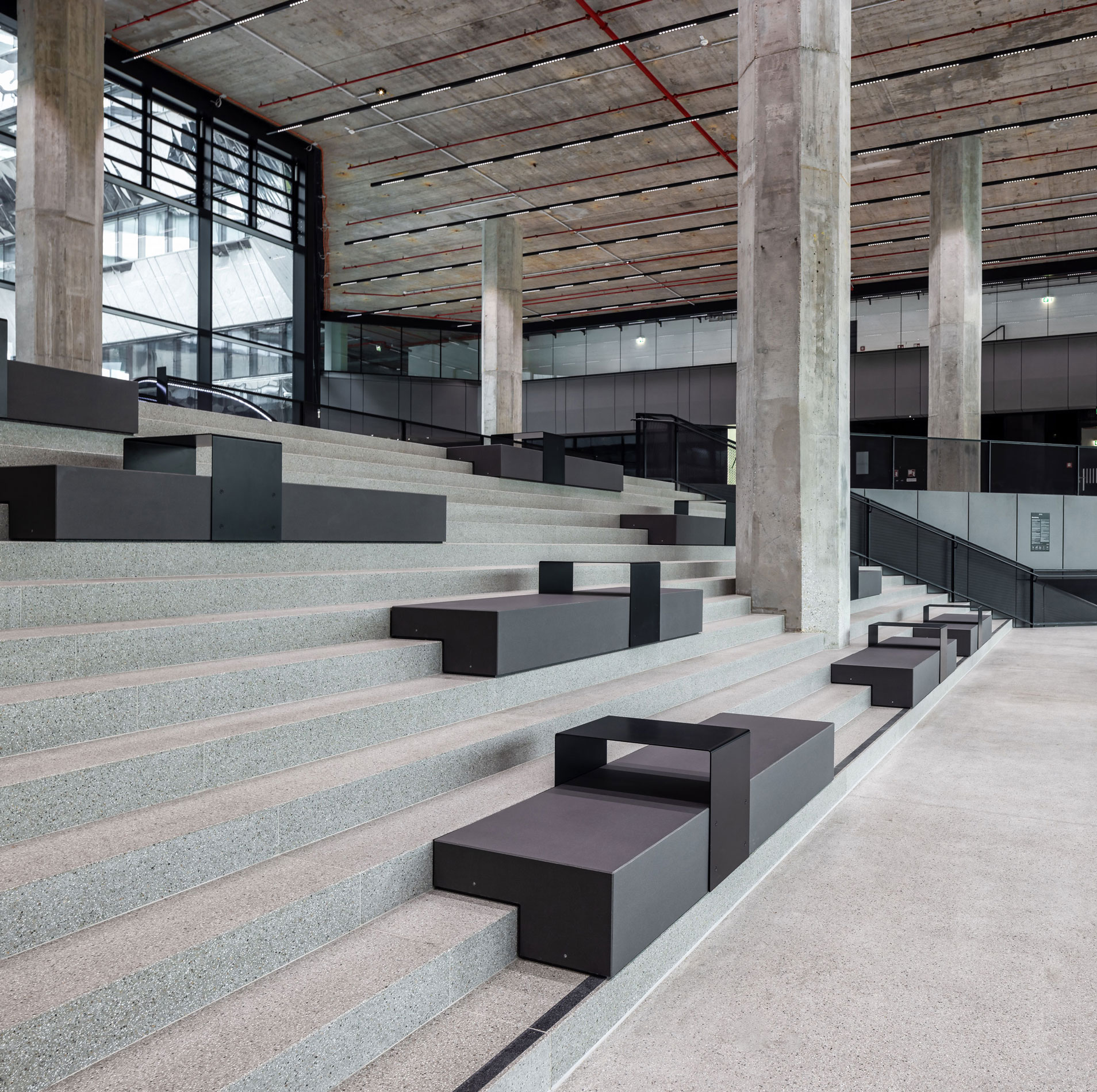
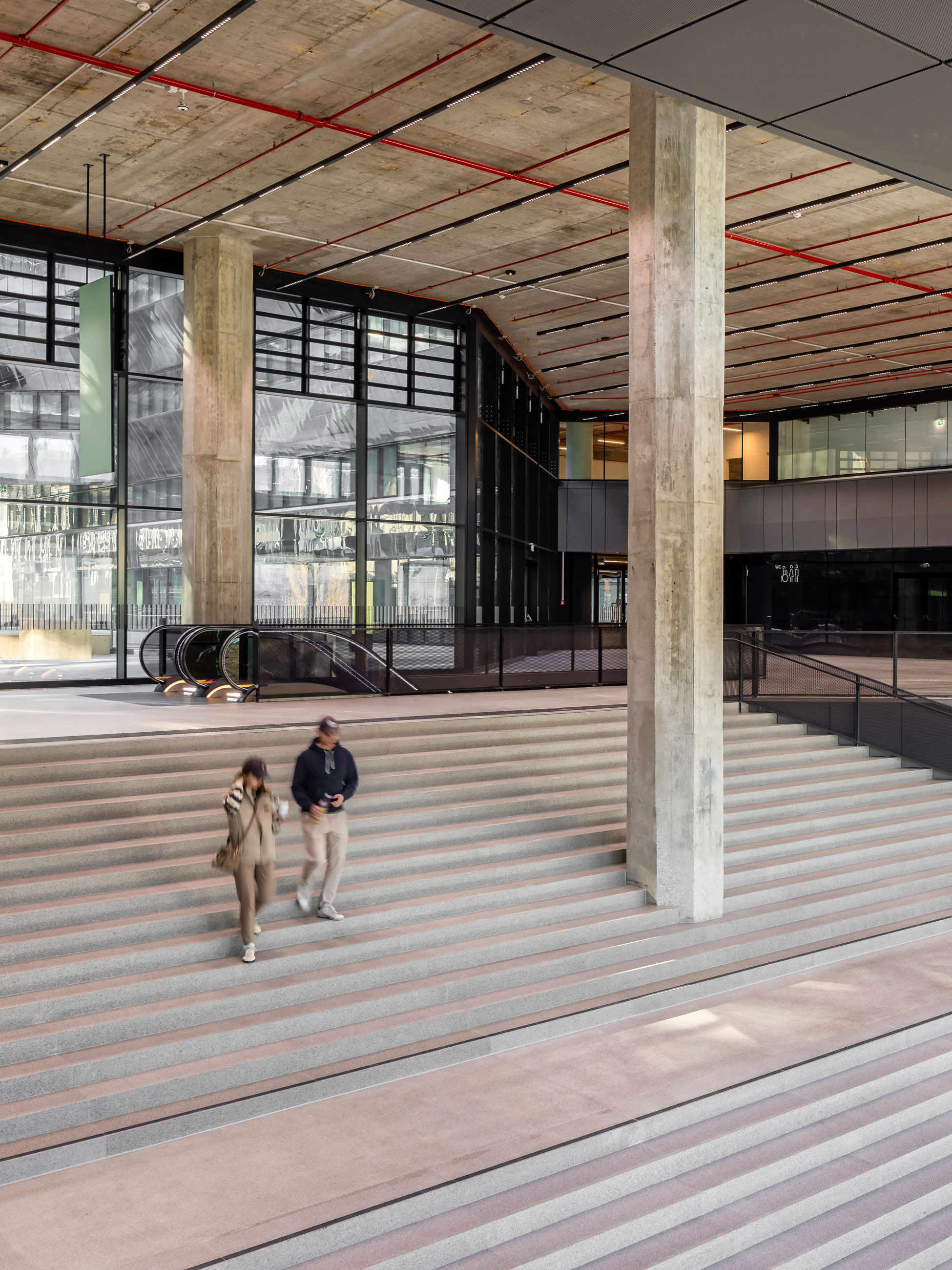
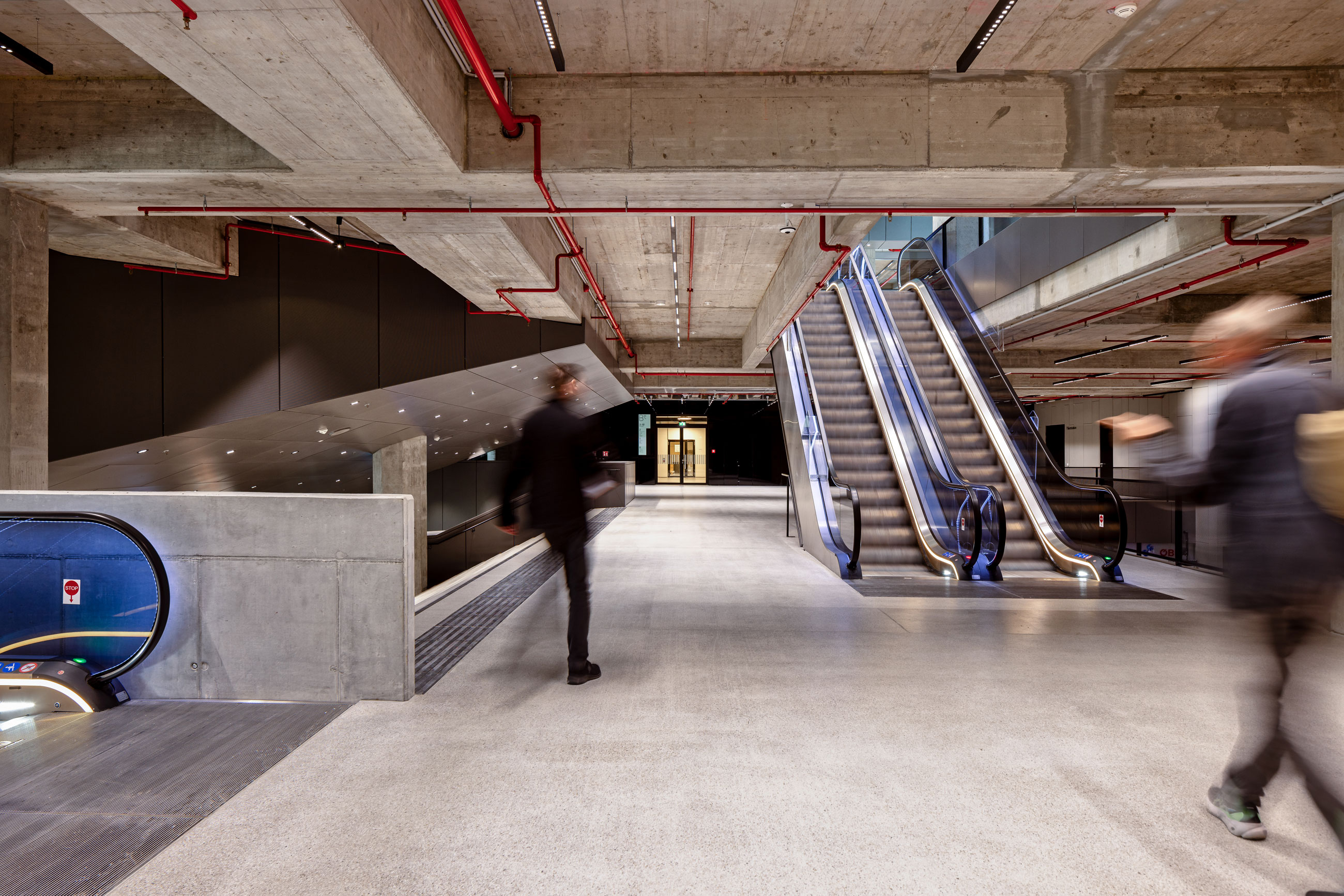
»In addition to ecological
reasons, the great spatial
quality and flexibility of this modular structure, developed in the spirit of modernism, also speak in favour of
preserving the existing
building fabric.«
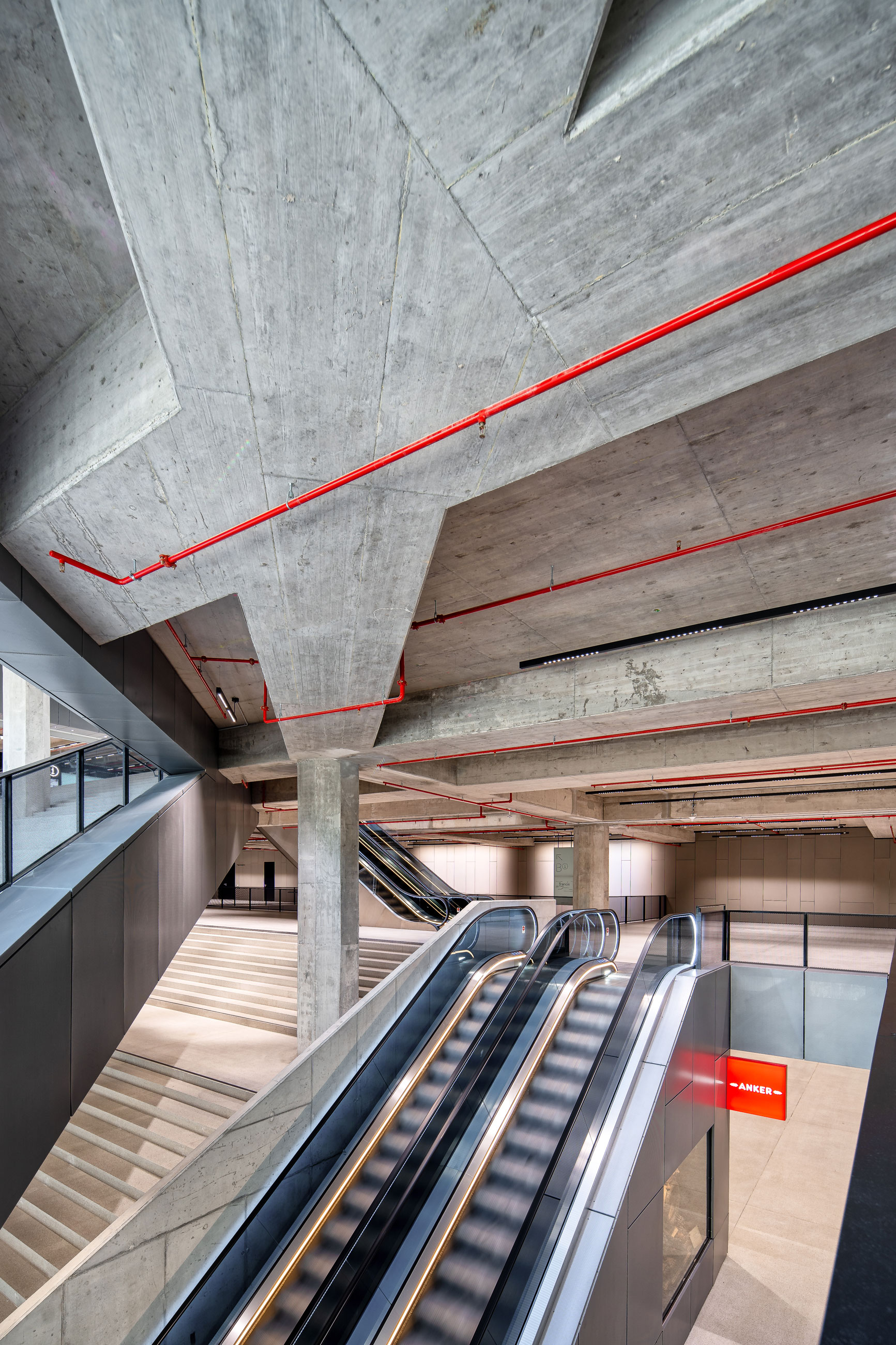
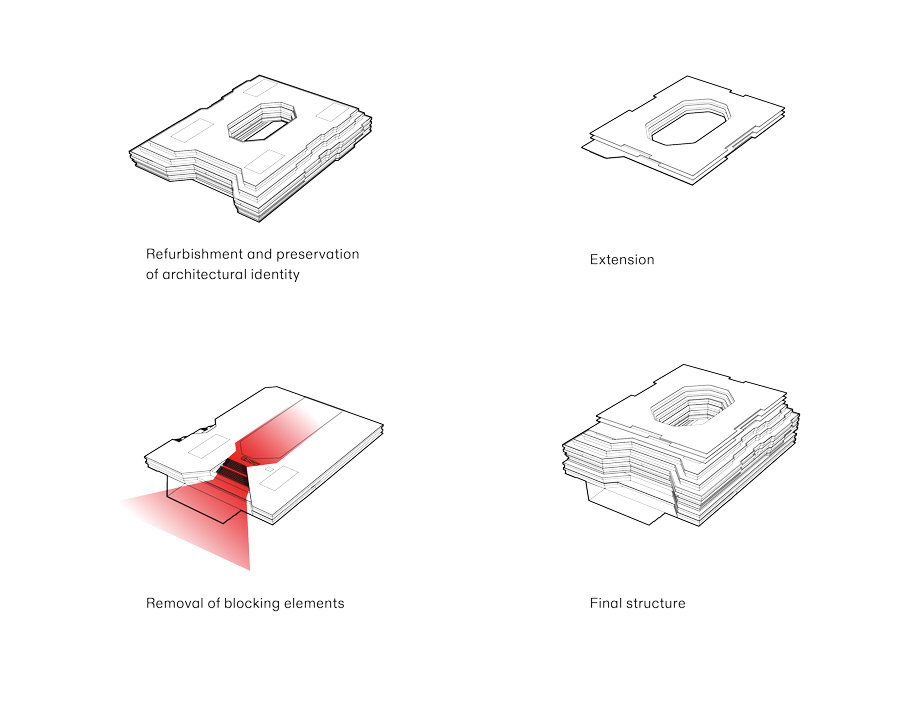
building-structure
Transformation of the Julius-Tandler-Platz
Existing staircase as a barrier
Expansion of the square by removing the stairs
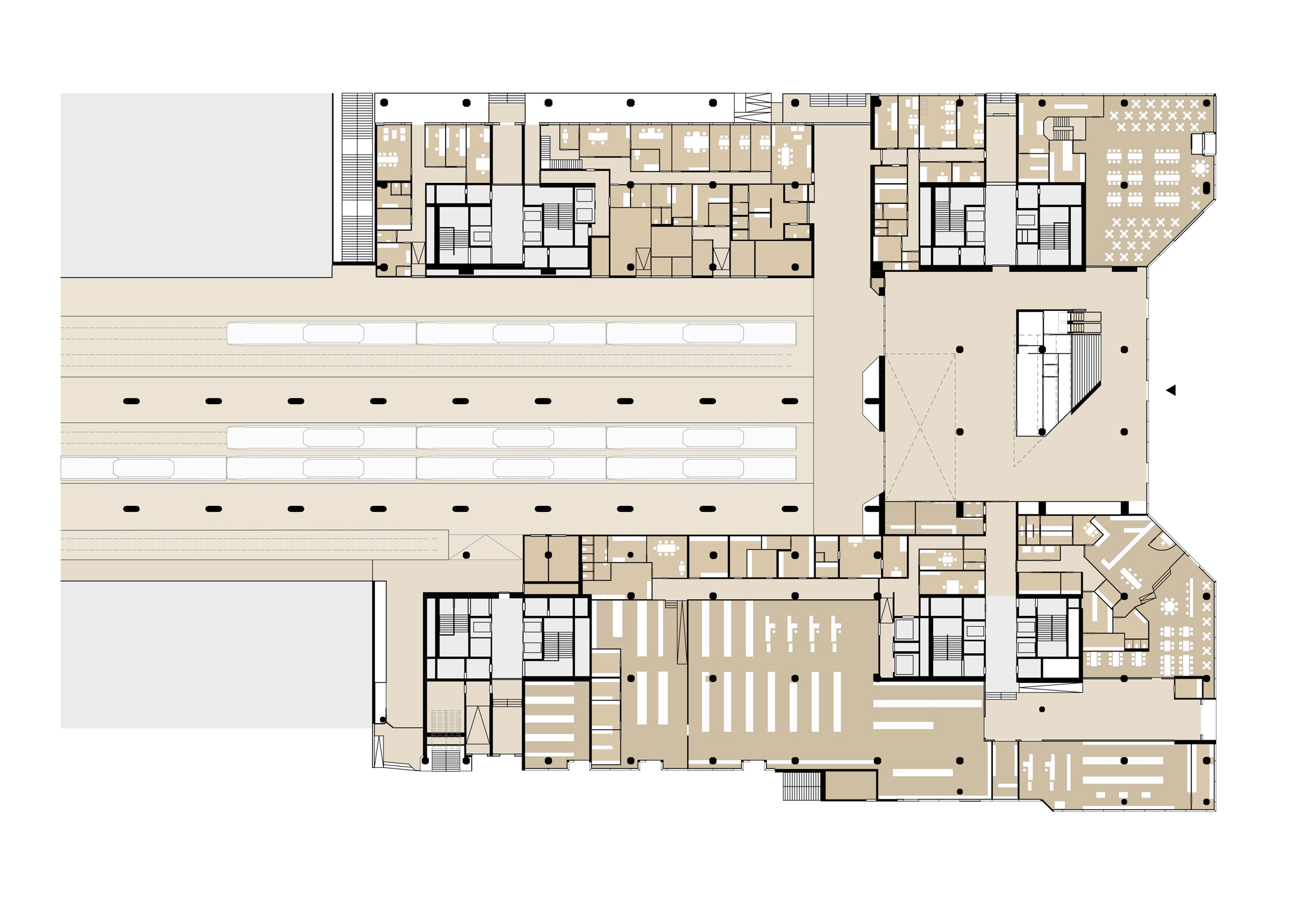
ground floor plan
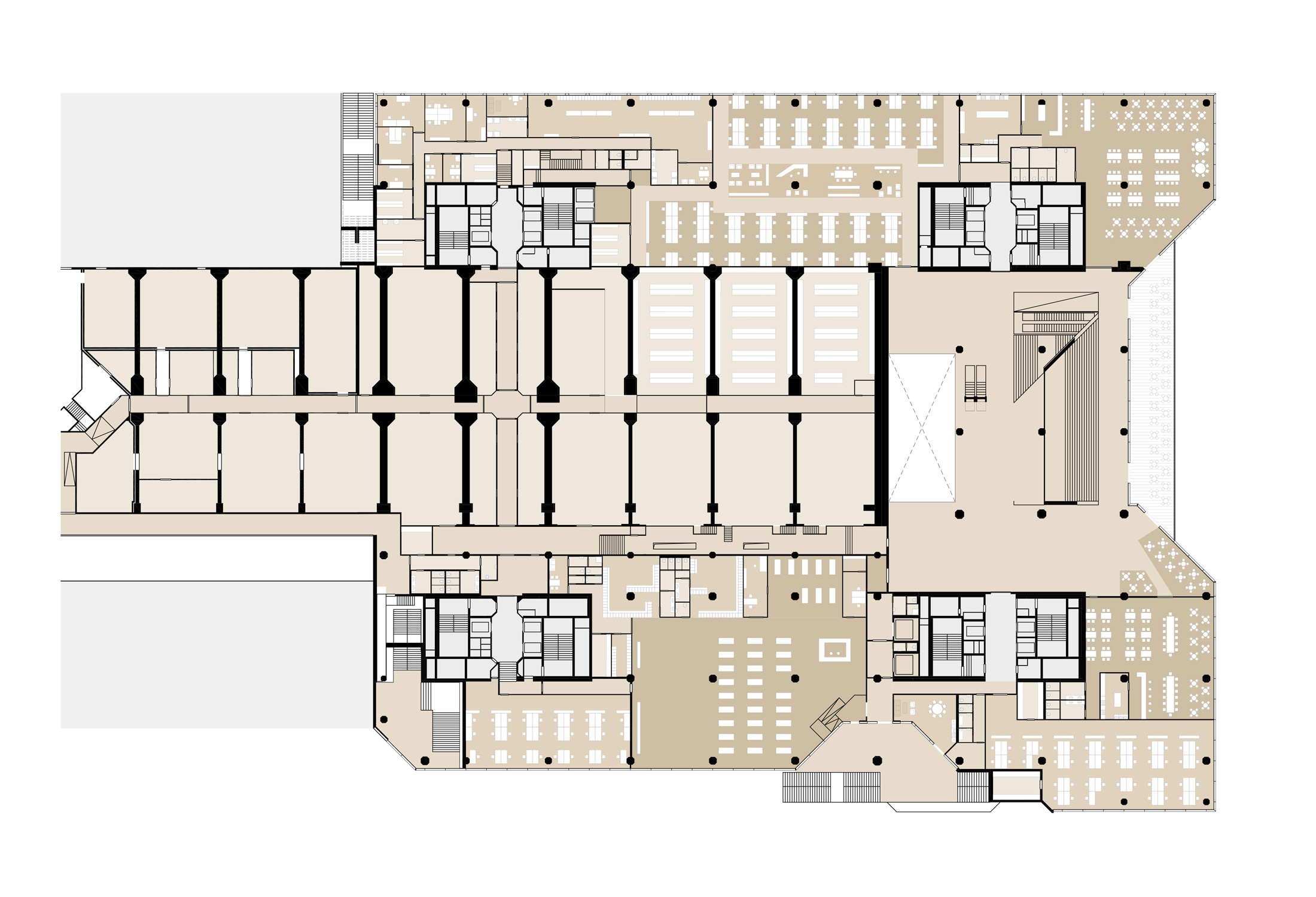
floor plan level 01
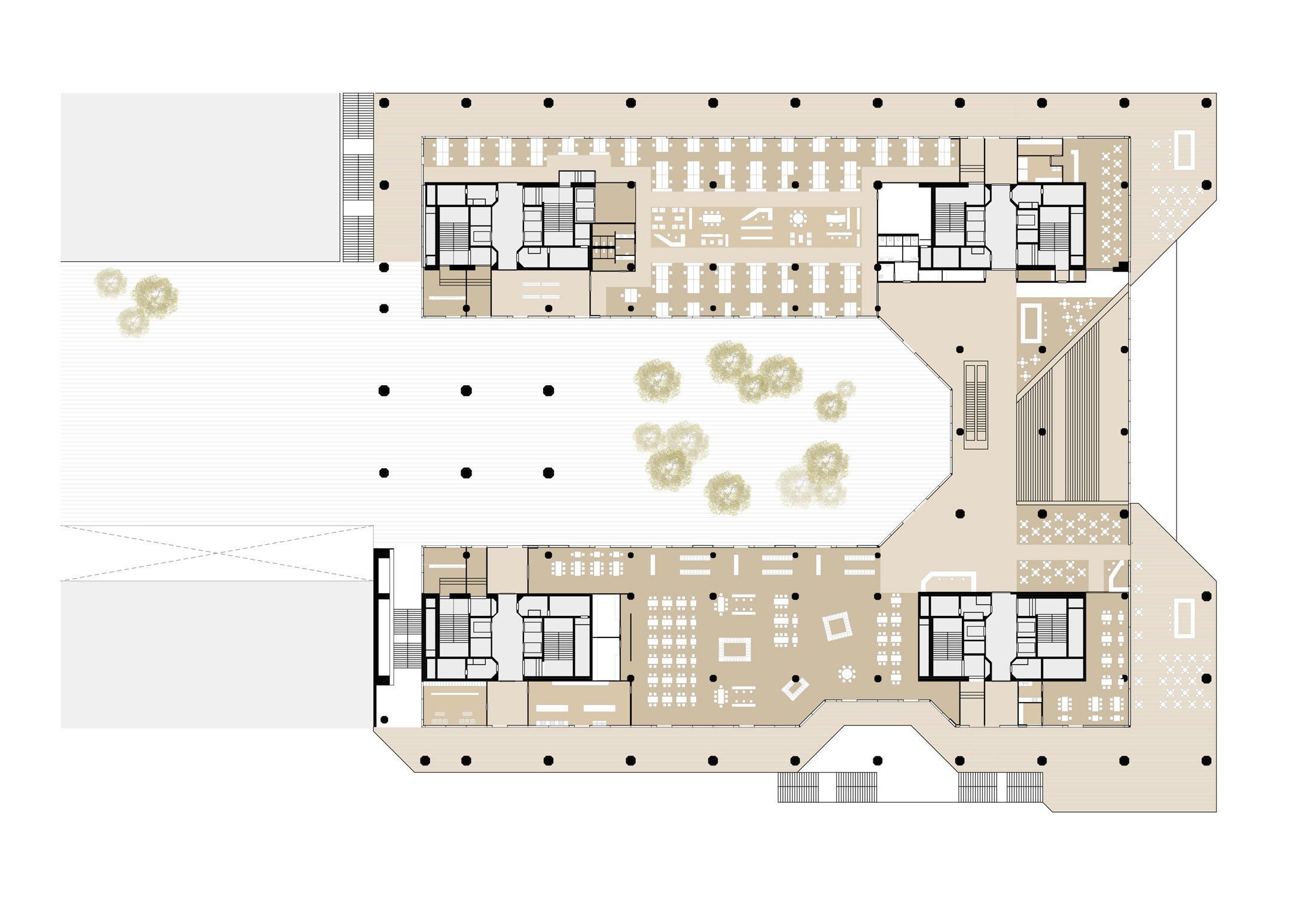
floor plan level 02
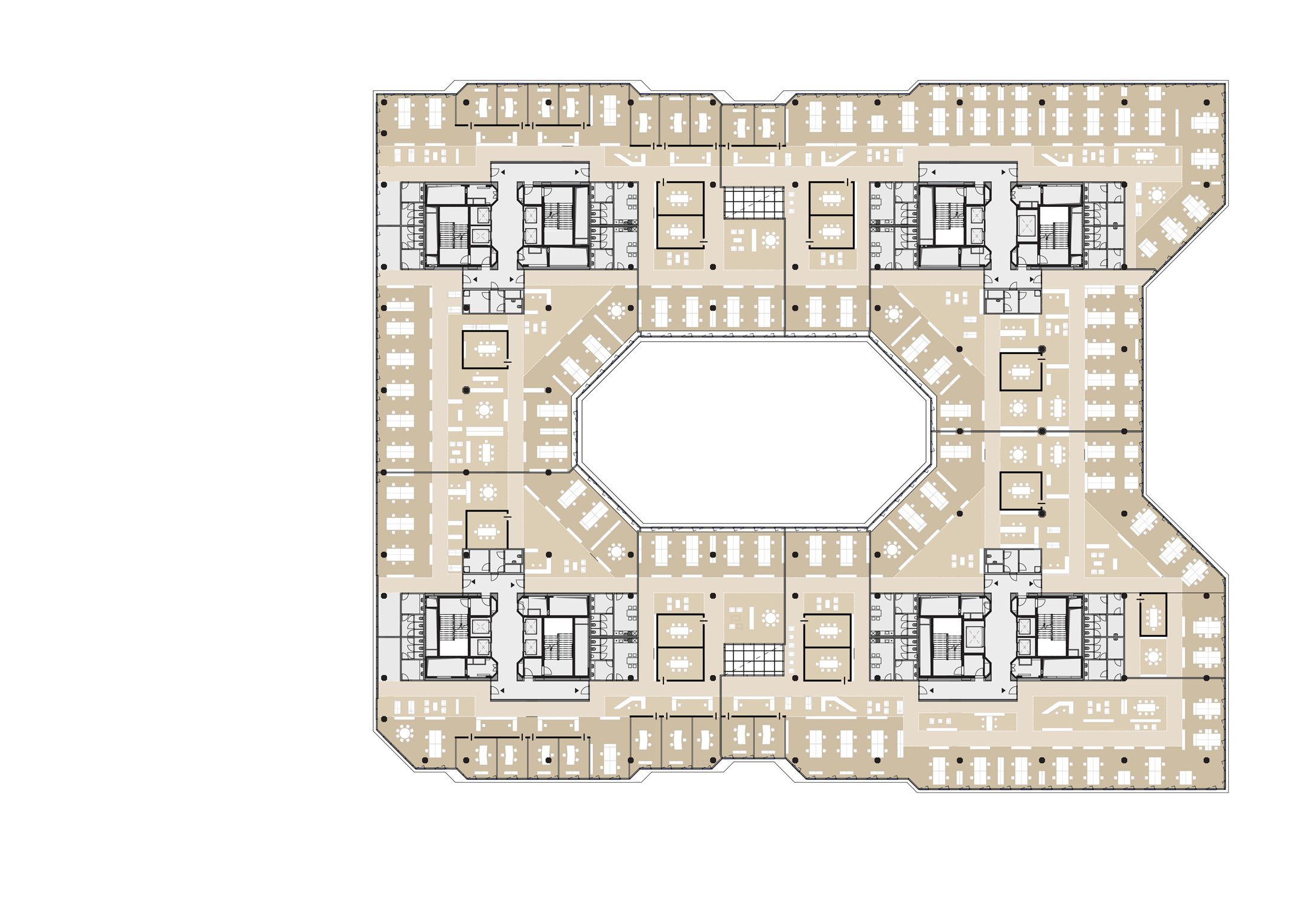
standard floor plan
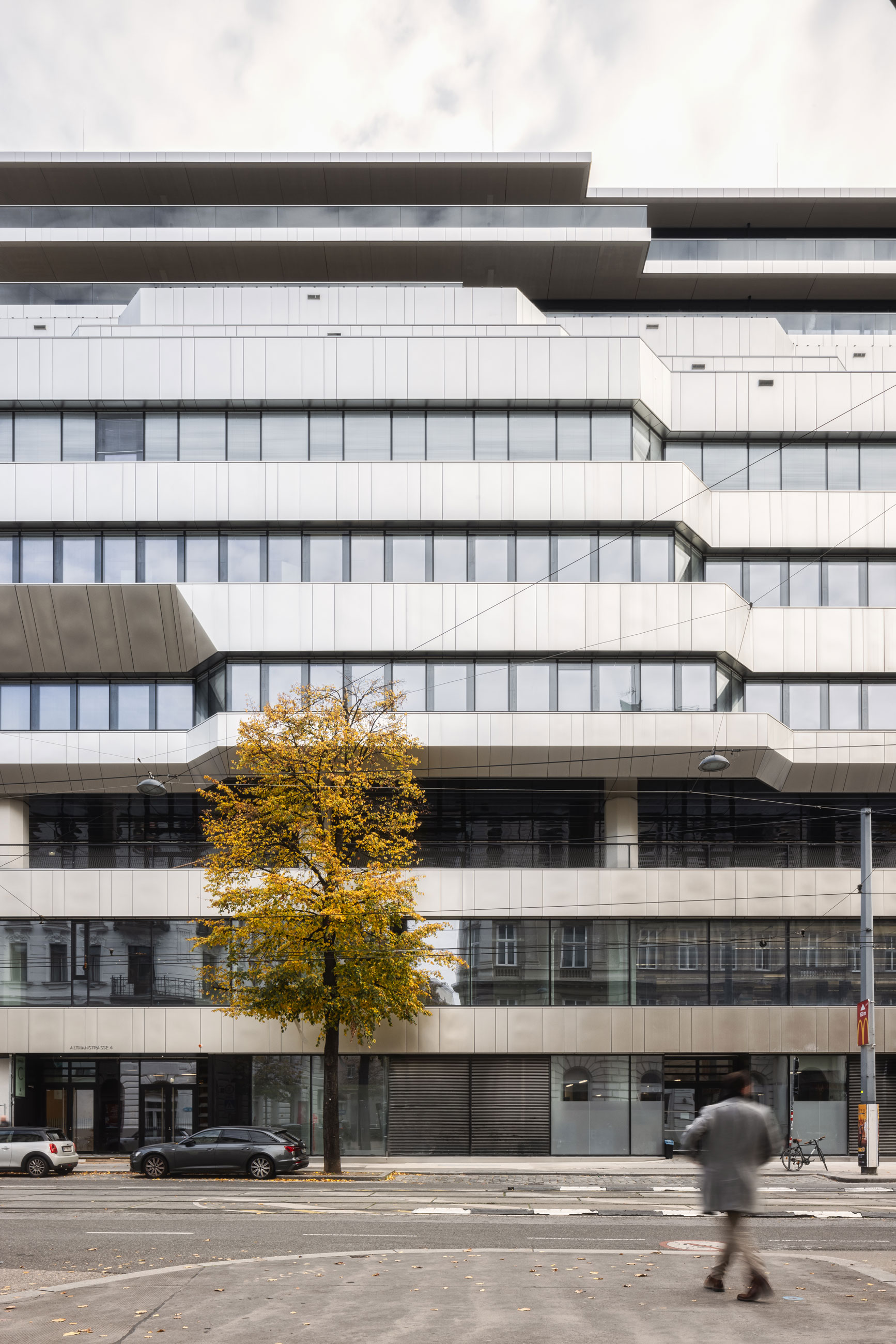
The façade of the building was freed from its mirroring. The new stainless steel cladding of the façade has a glare-free and silky matt appearance thanks to its fine embossing, while the terraces create additional open spaces for restaurants and offices and a counter-design to the building‘s previous seclusion.
Another planning focus was on the design of a vivid base zone. The extensive opening of the base achieves the desired spatial relationship to Julius-Tandler-Platz, makes the station hall more attractive and creates an inviting connection to the central plaza level. At the northern rear of the building, a connecting structure from the 1970s, between the office complex and the garage, was removed in order to return to Karl Schwanzer‘s original idea of a cubic solitary building.
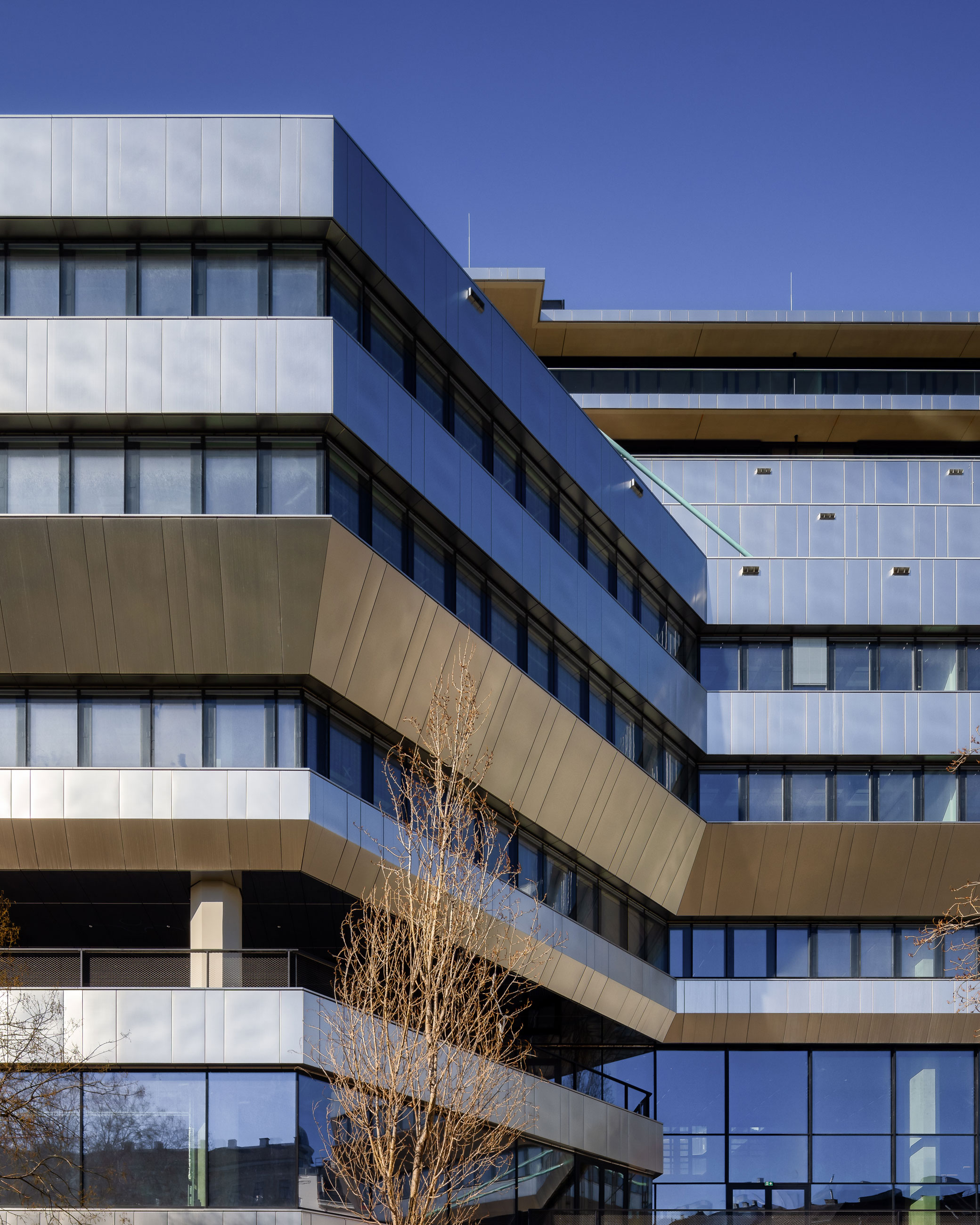

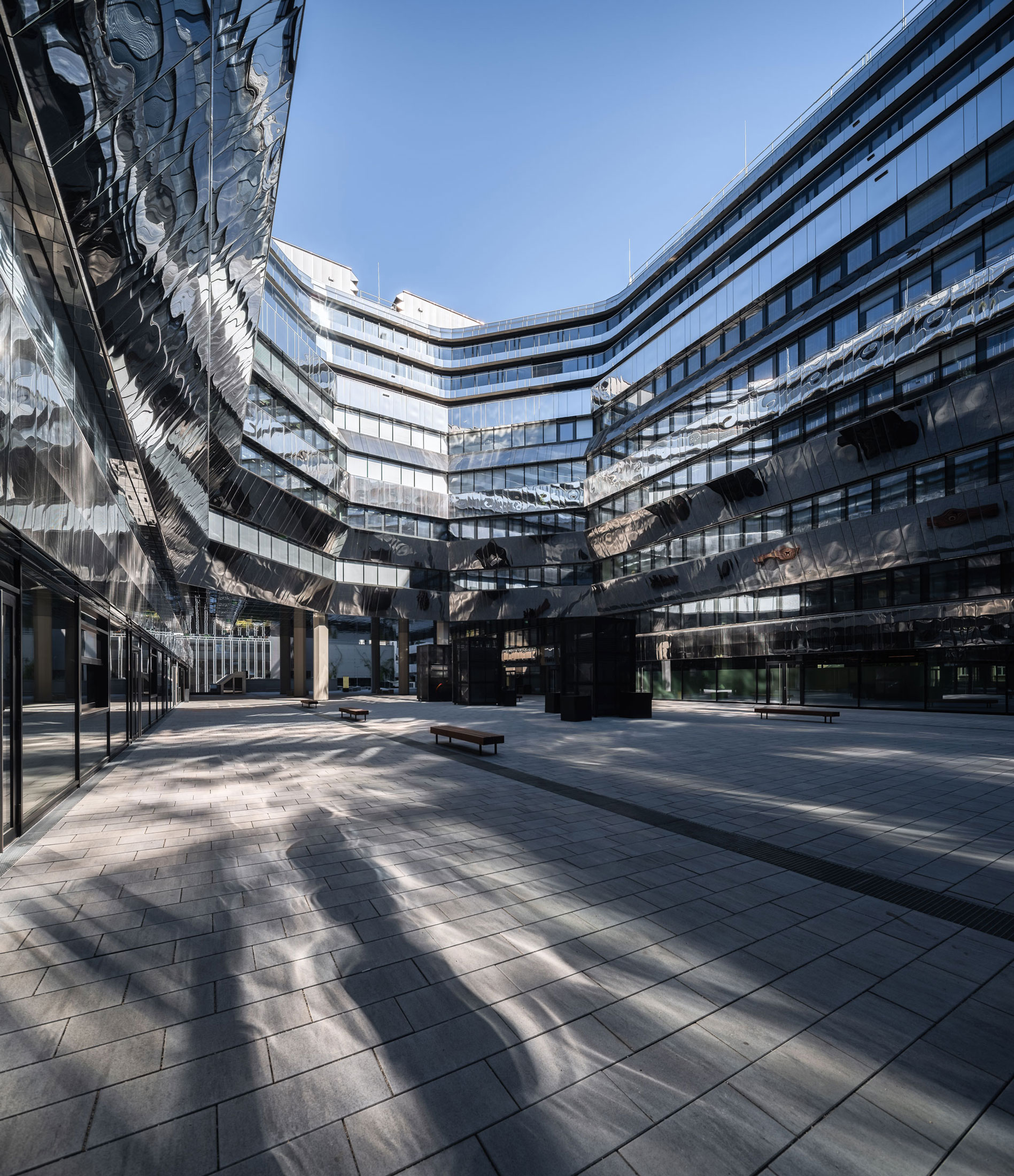
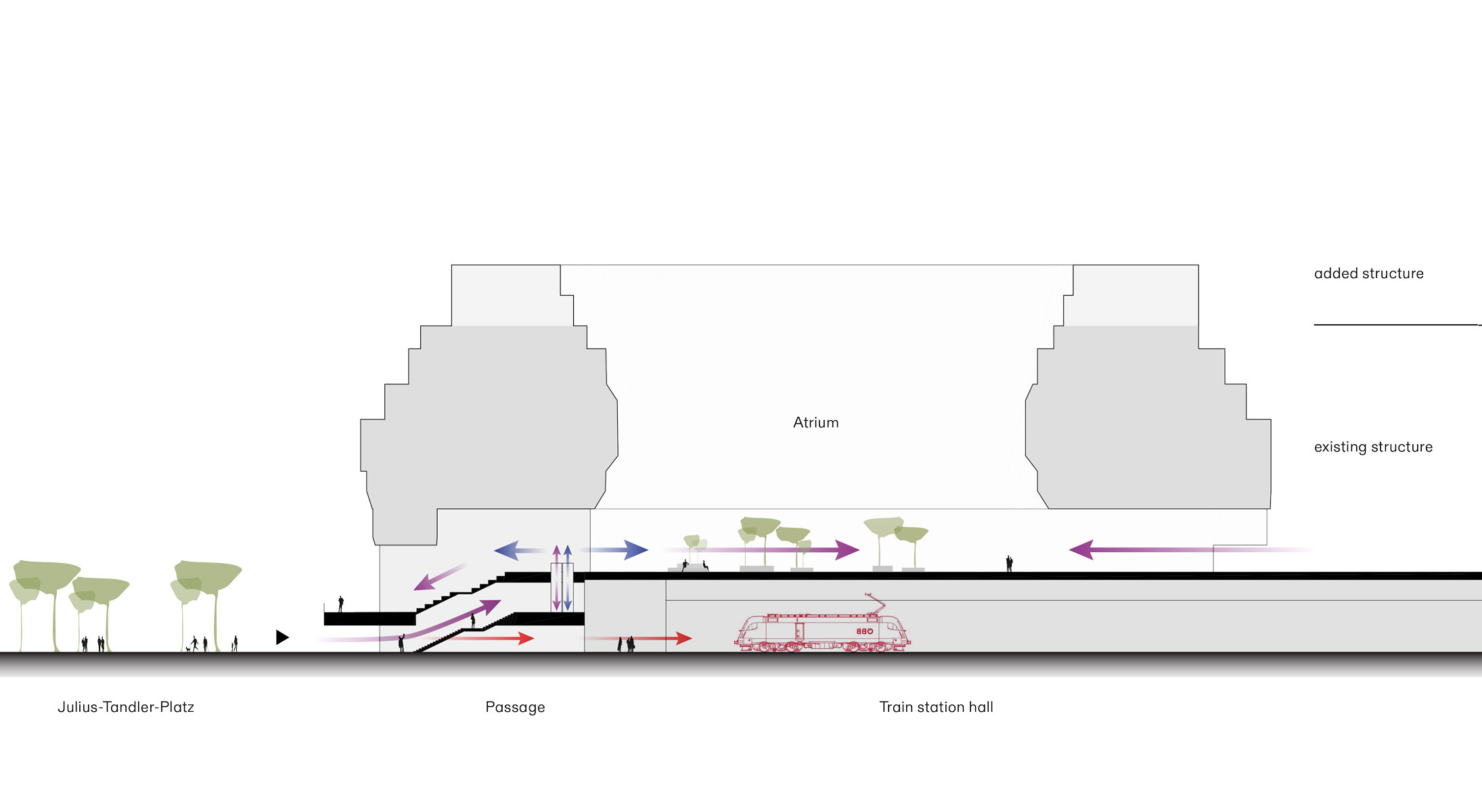
schematic section
Decisive premises of the project development were the pedestrian permeability, the opening to Julius-Tandler-Platz, the broadest possible mix of uses, the redensification of an urban core zone and the harmonious integration into the urban space.
The redensification was achieved by means of a two-storey extension, which was staggered back in line with the contours of the building and thus blends almost imperceptibly into the physiognomy of the existing structure.
The eight office storeys with their spacious outdoor areas offer around 40,000 m² of usable space, looking out over the neighbouring palaces, Liechtenstein Park and across the city centre to St. Stephen‘s Cathedral. The optimal connection to the local and long-distance transport network, with all major means of public transport accessible within a few minutes, is forward-looking. The connection to the nearby bike routes along the Danube Canal is just as ideal. Secure bicycle parking spaces are available on the first floor of Francis. The intelligence of the building is also evident in the supply and disposal system: this is organised via the underground loading yard, thus keeping above-ground delivery traffic to a minimum.
The conversion project benefits from the intelligent economy of the existing building‘s skeleton structure. Column spacing of 10 metres and the removable prefabricated ceiling allow the greatest possible flexibility for the design of the conversion. Attractive room heights of up to 3.5 metres, which are rarely realized in new buildings, provide flair and brightness.
The comprehensive adaptation to today‘s safety standards, safety technology, building physics, statics and earthquake resistance, as well as the achievement of gold certification from the ÖGNI (Austrian Sustainable Building Council/ Österreichische Gesellschaft für Nachhaltige Immobilienwirtschaft) through high ecological standards for building material, underline the importance of this project as a model for future urban transformations.
The Francis conversion project thus demonstrates the intelligent utilisation of existing building structures and sets new standards in terms of ecological sustainability and urban integration.
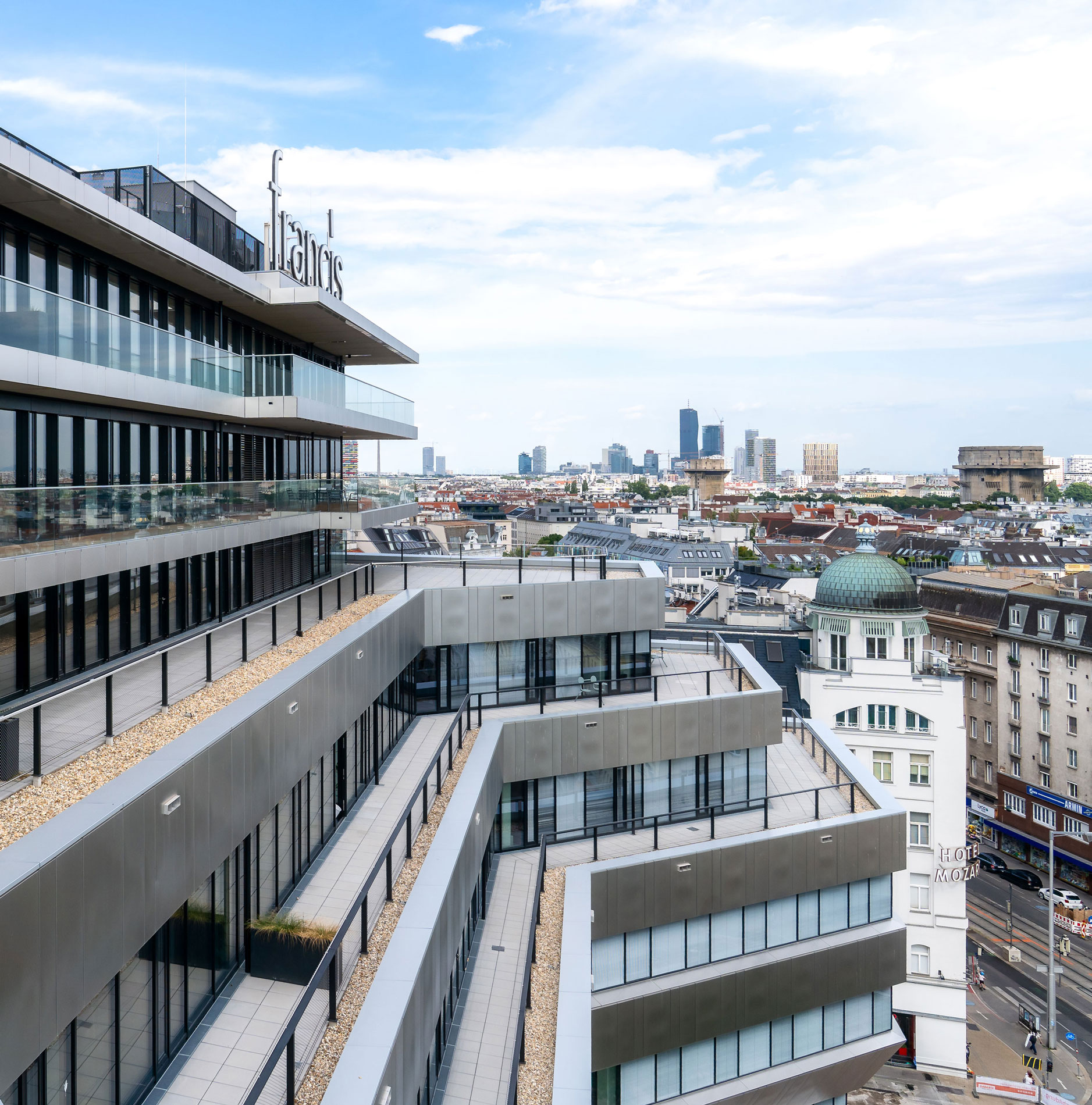
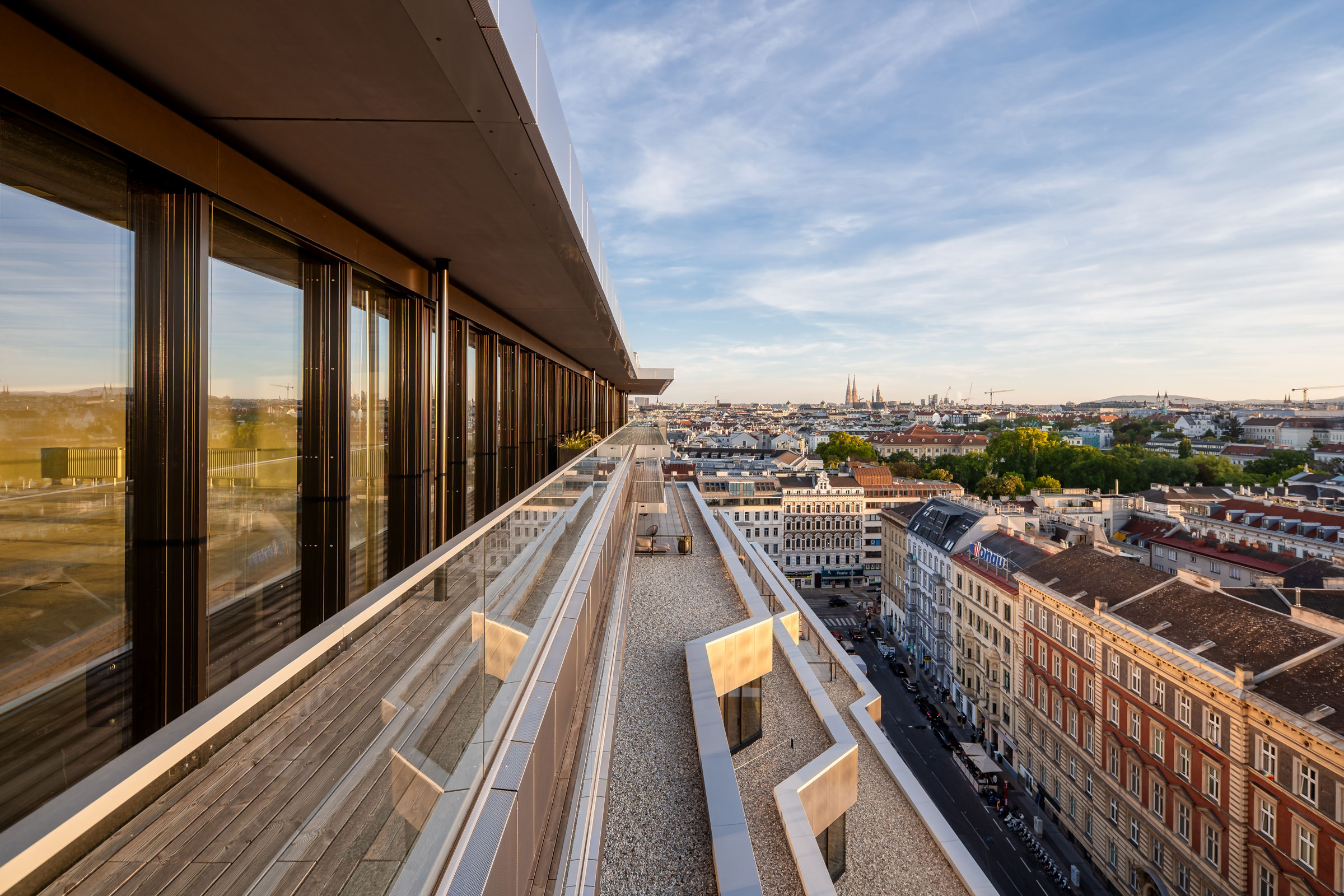
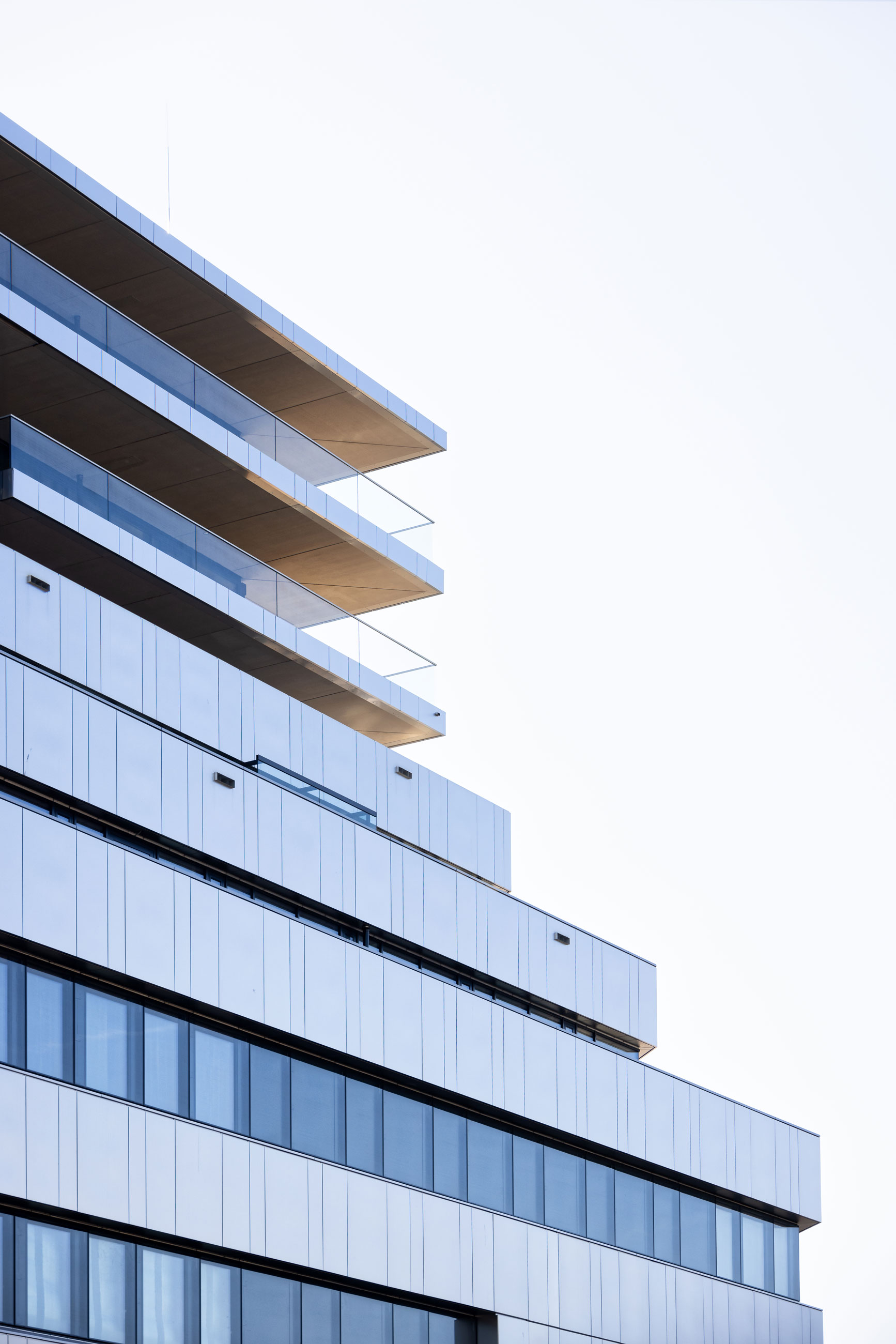
Art in construction
Moko Jumbie
Steinbrener/Dempf & Huber
